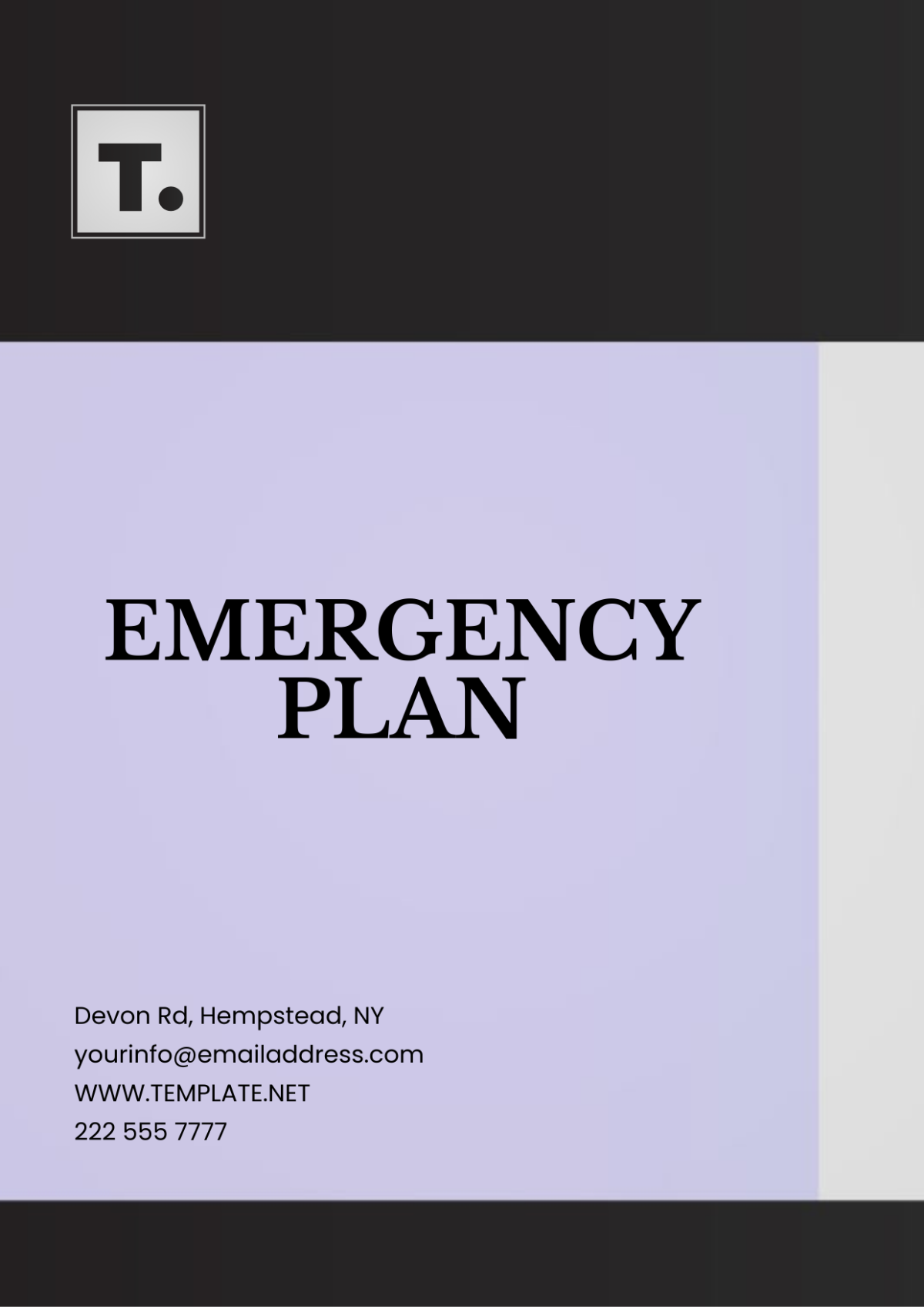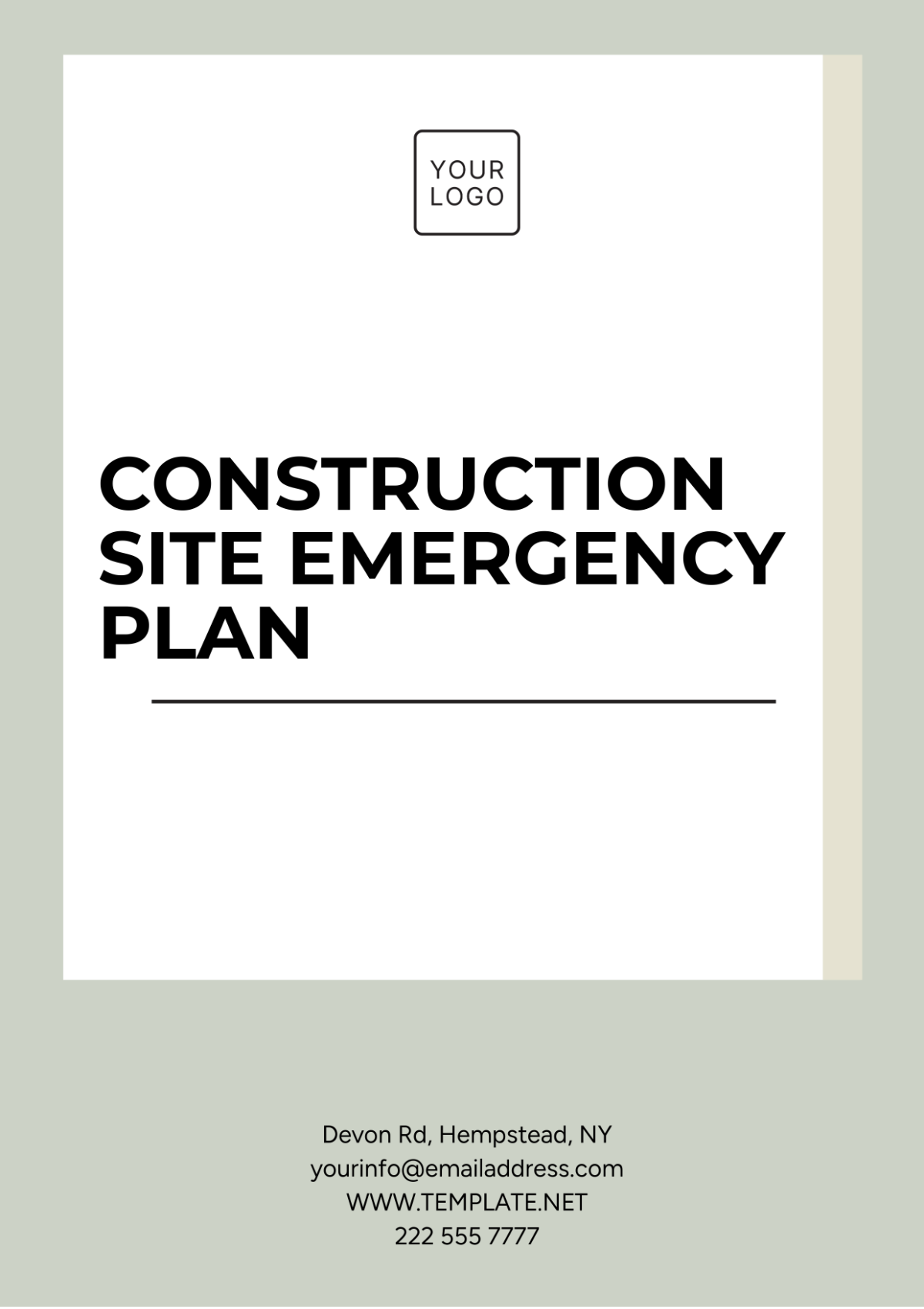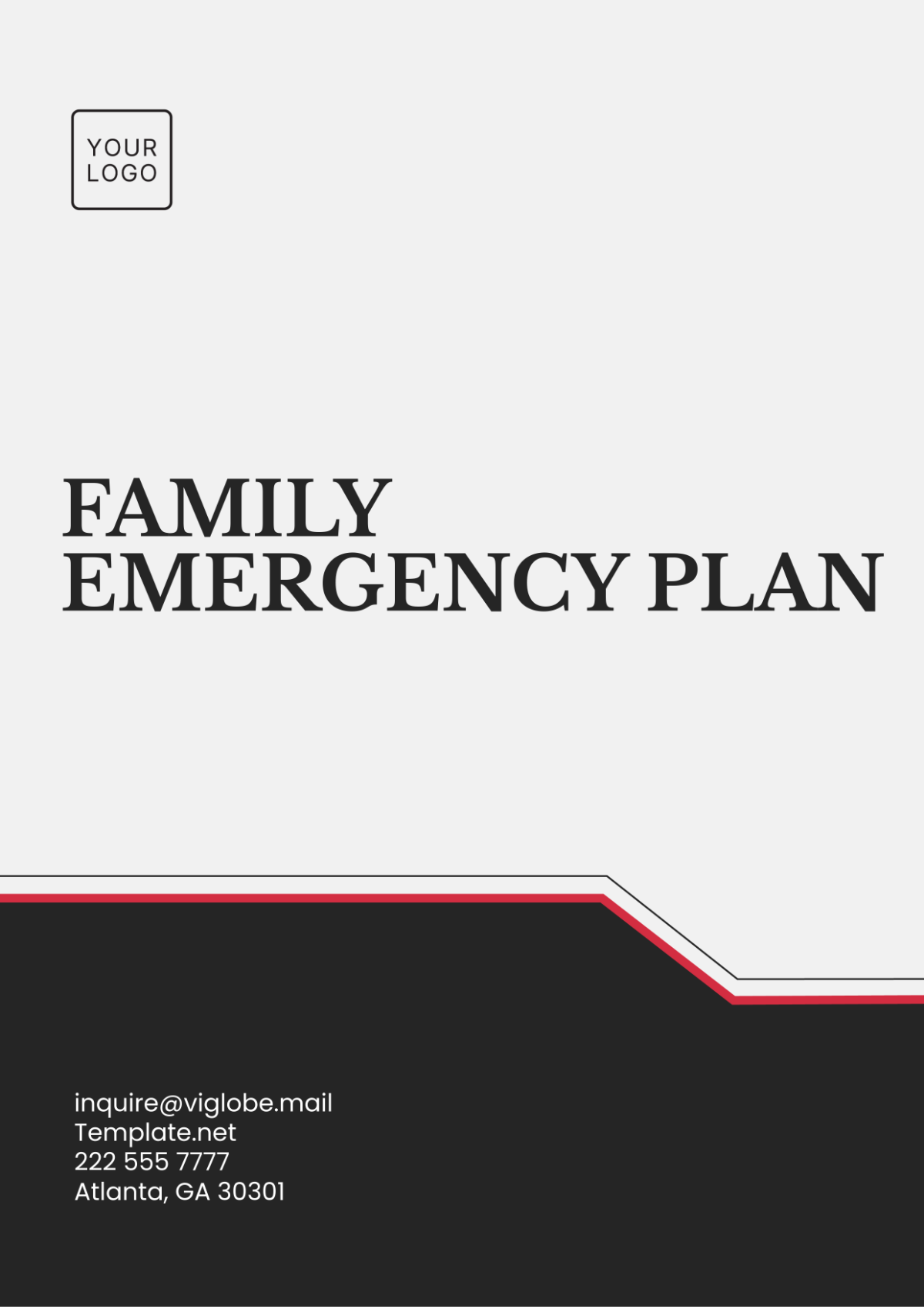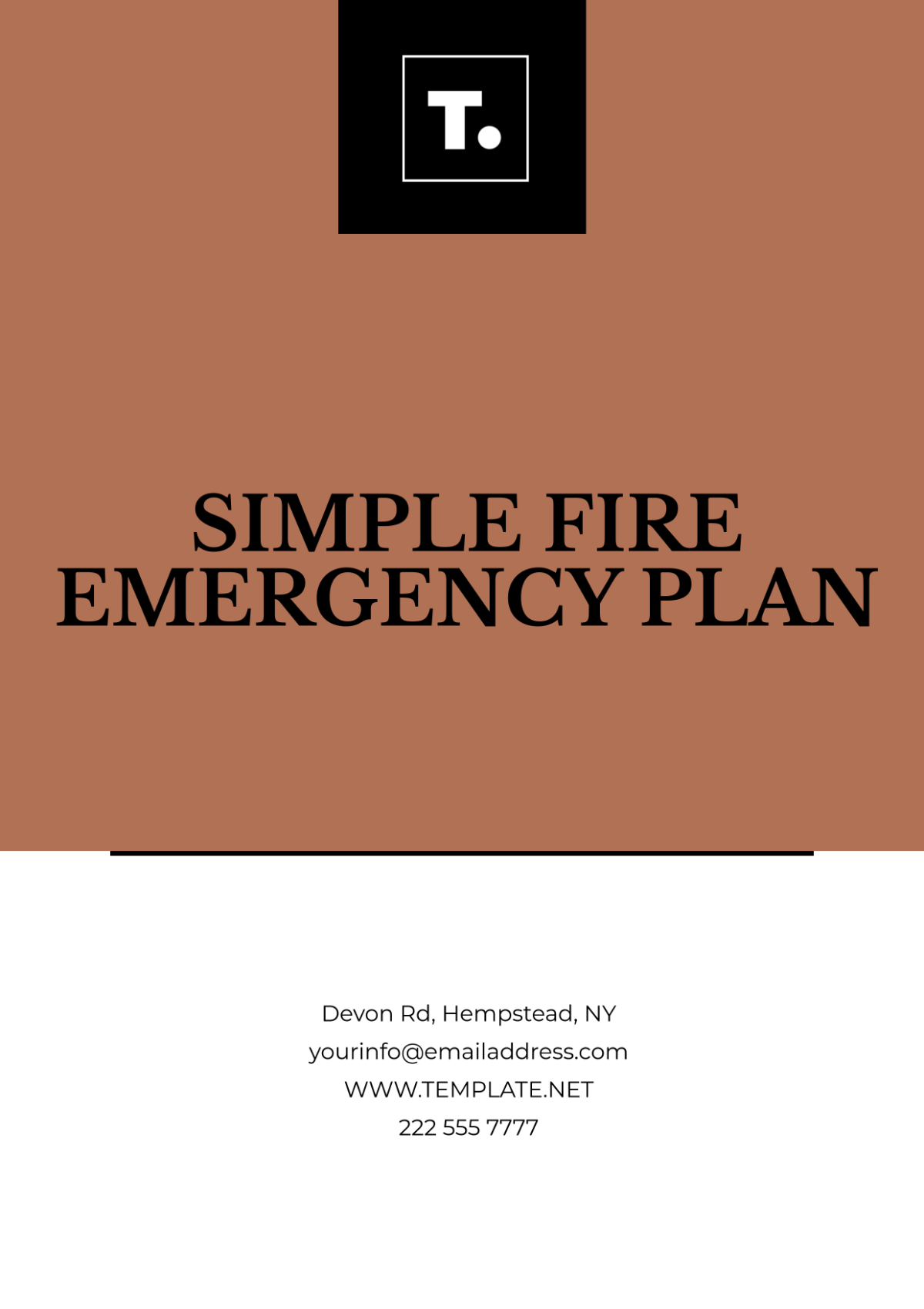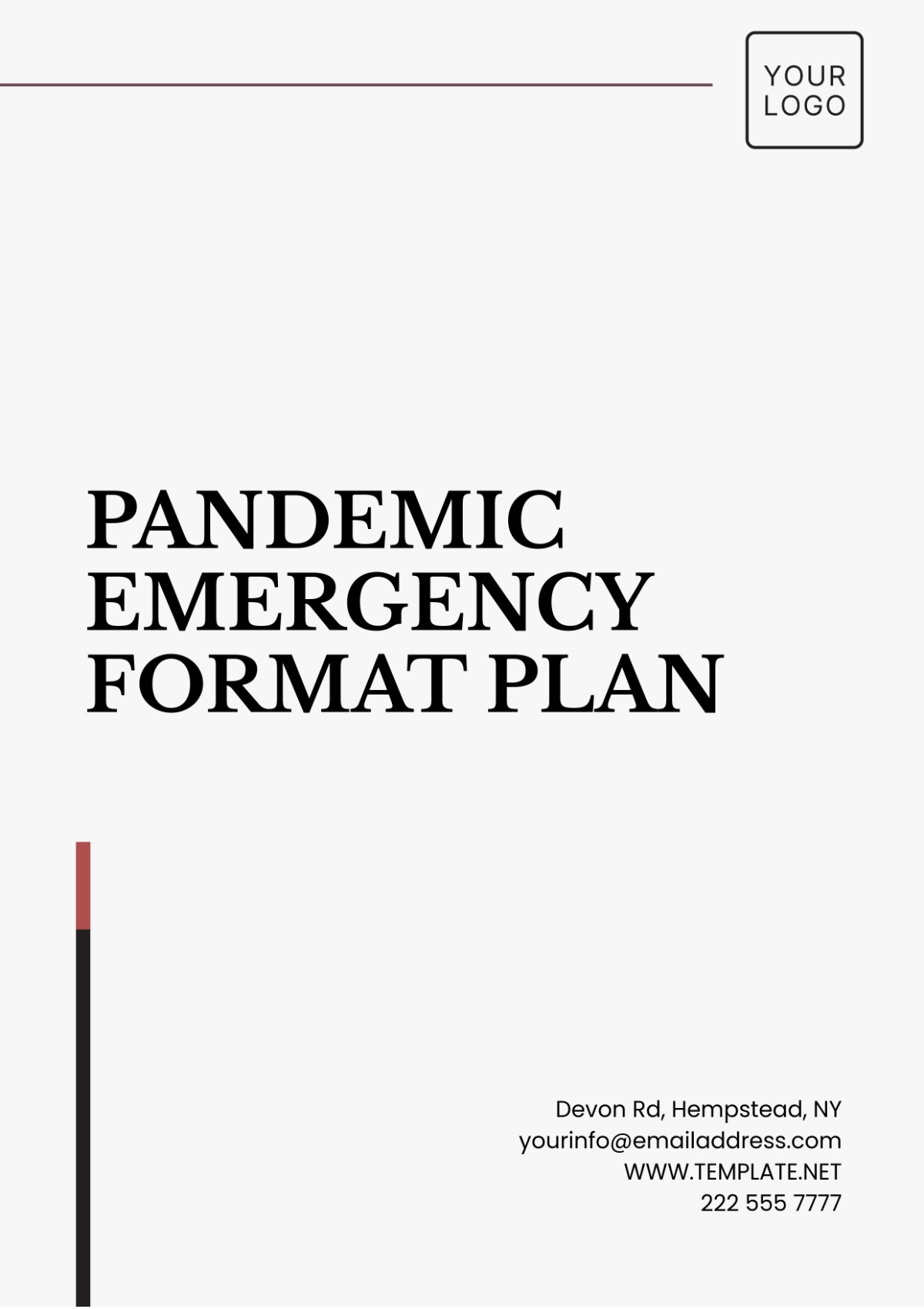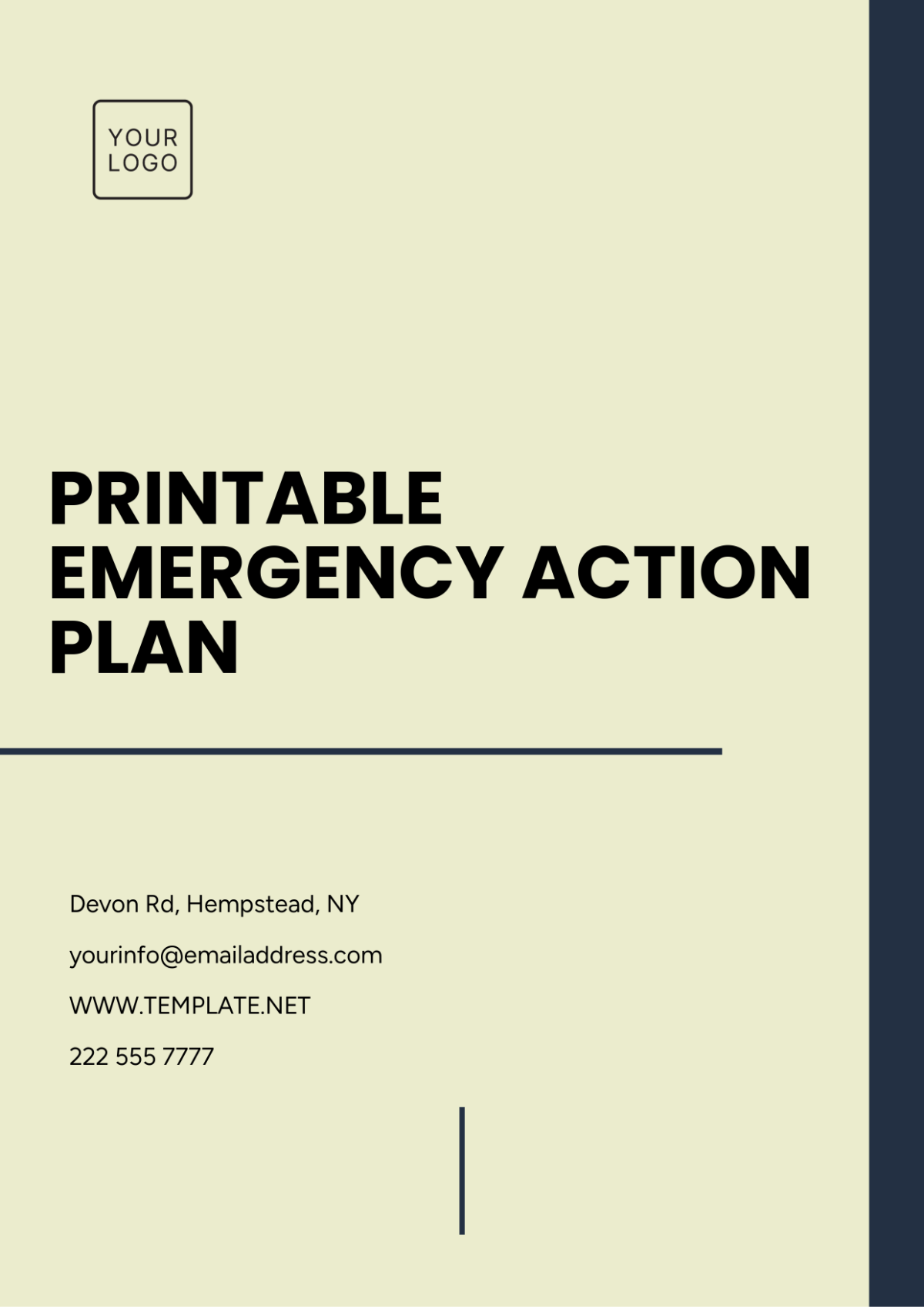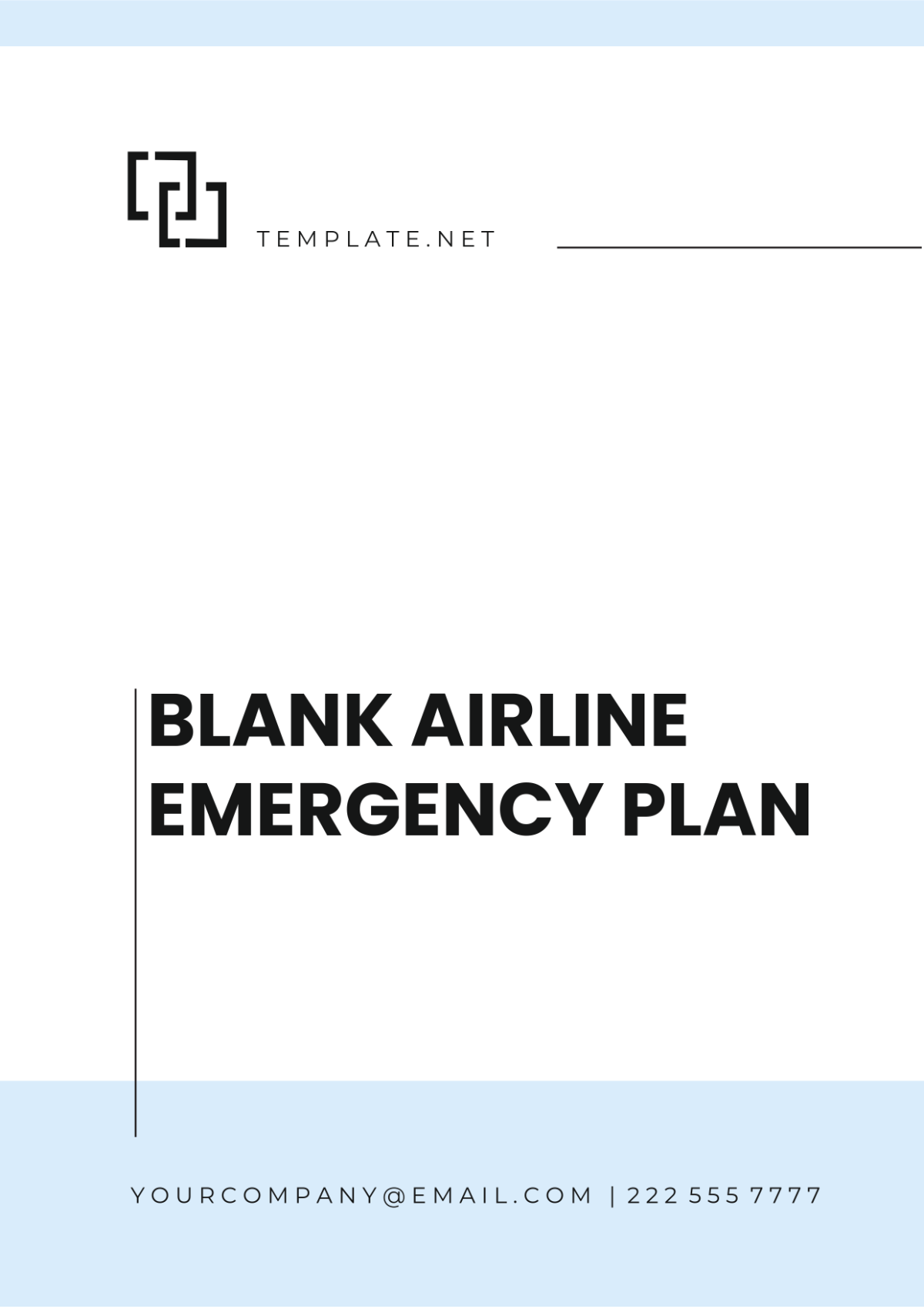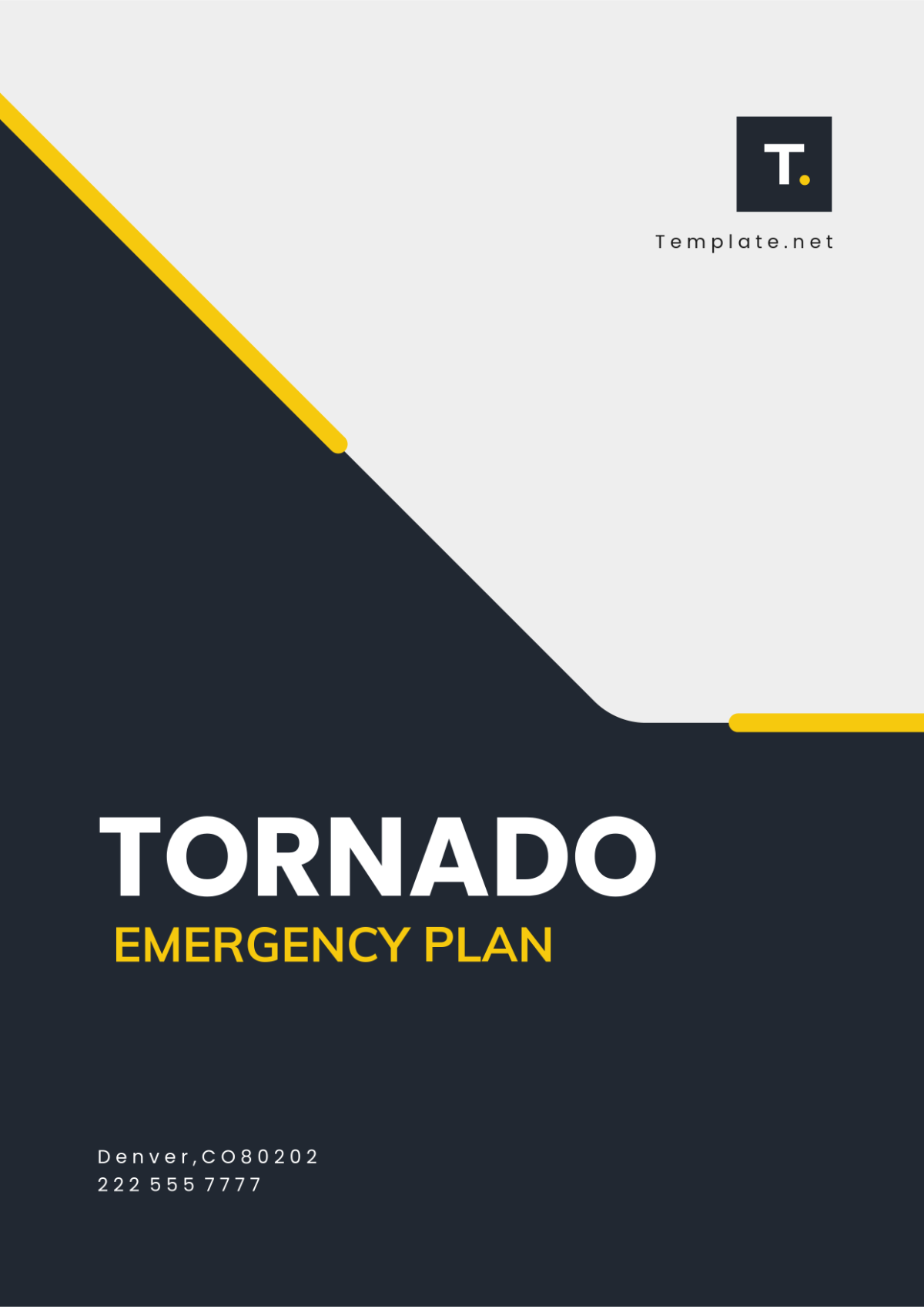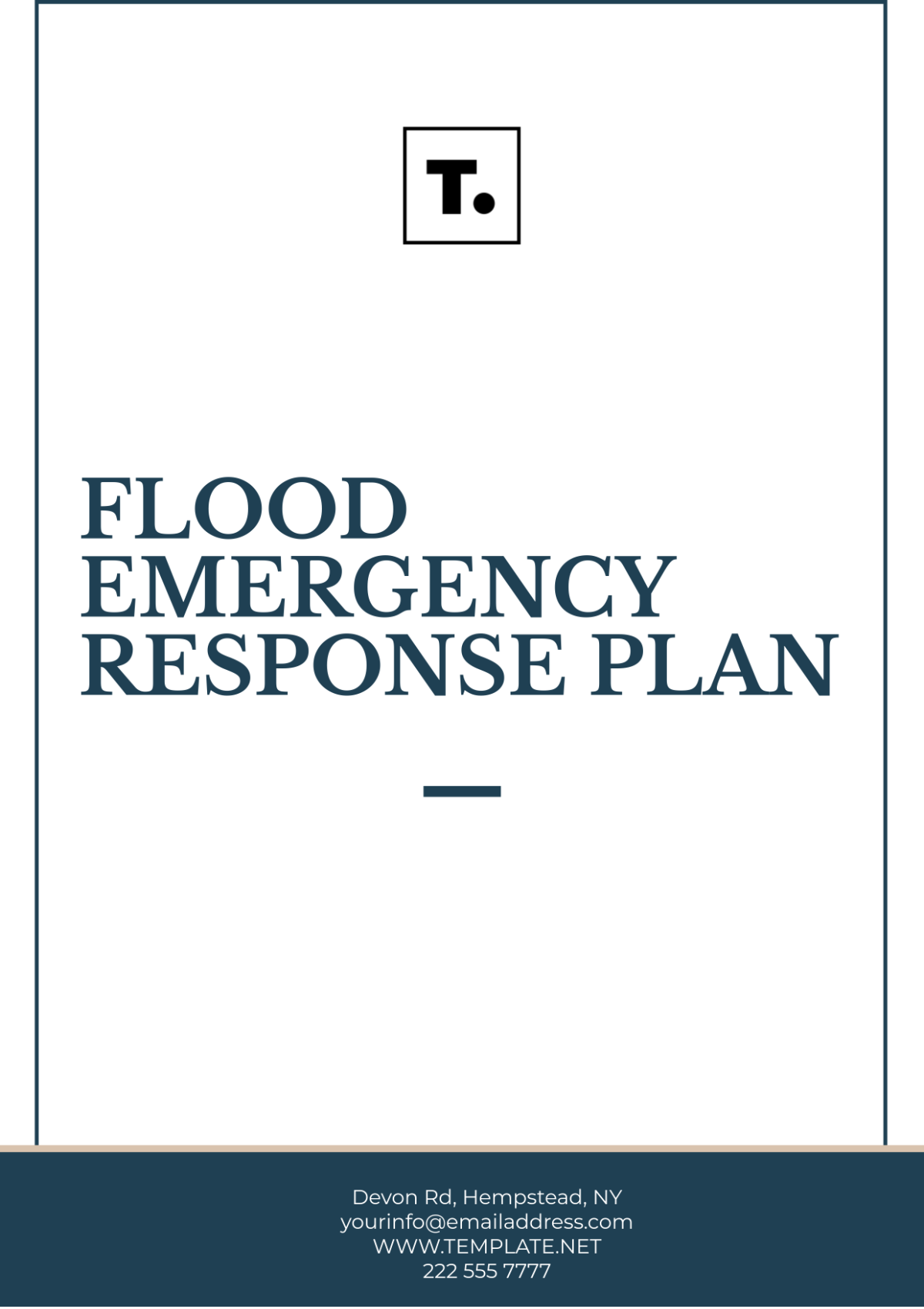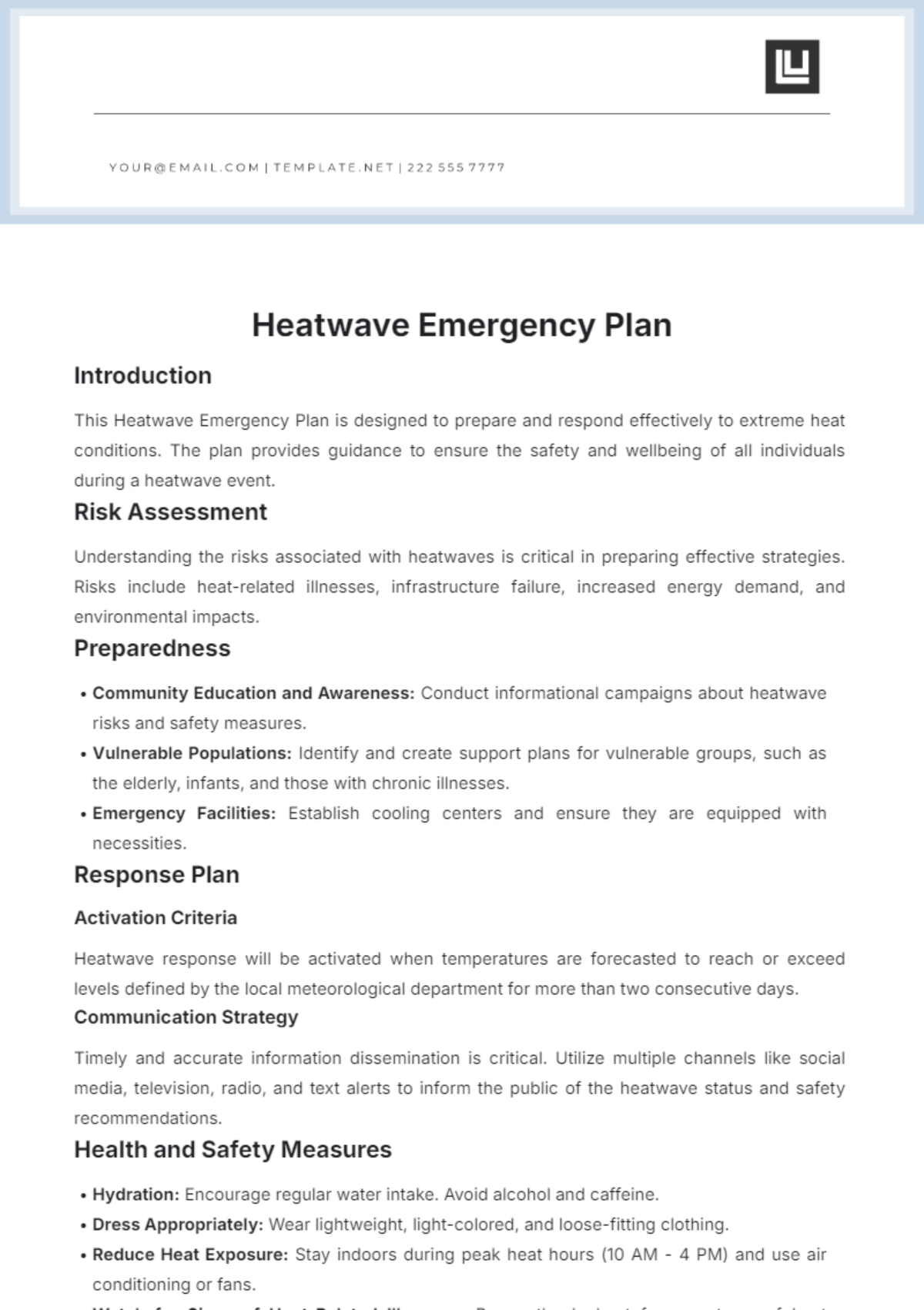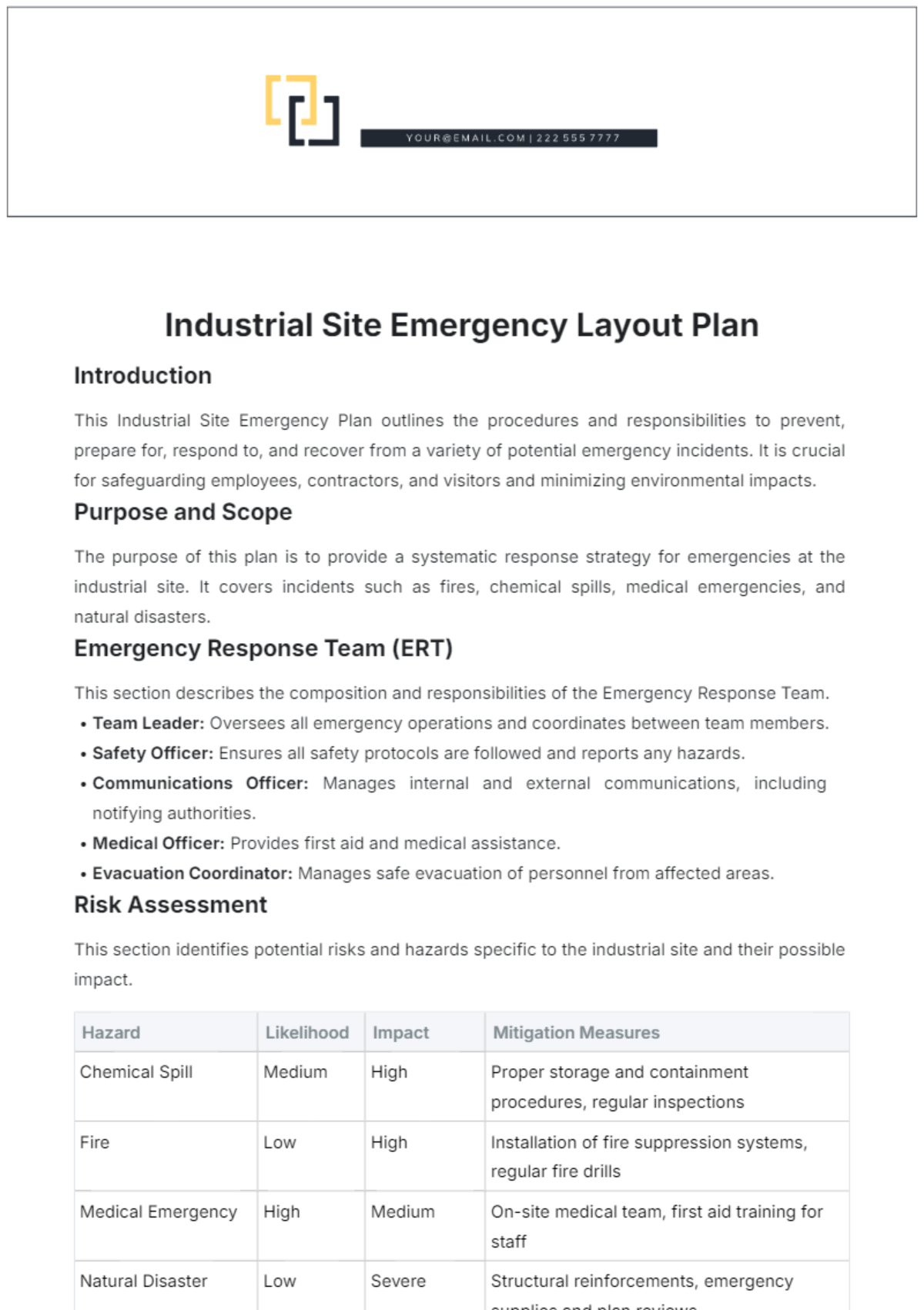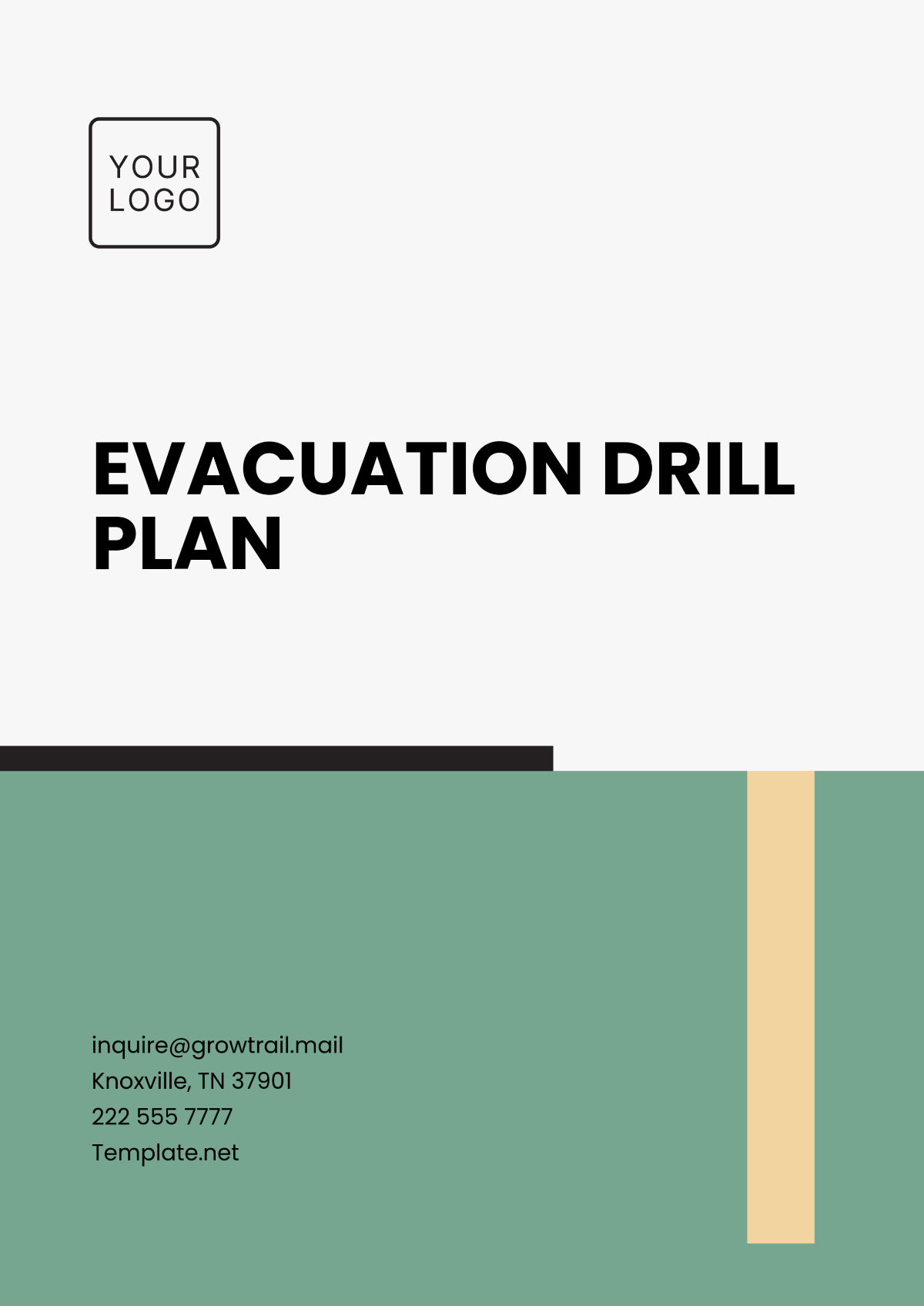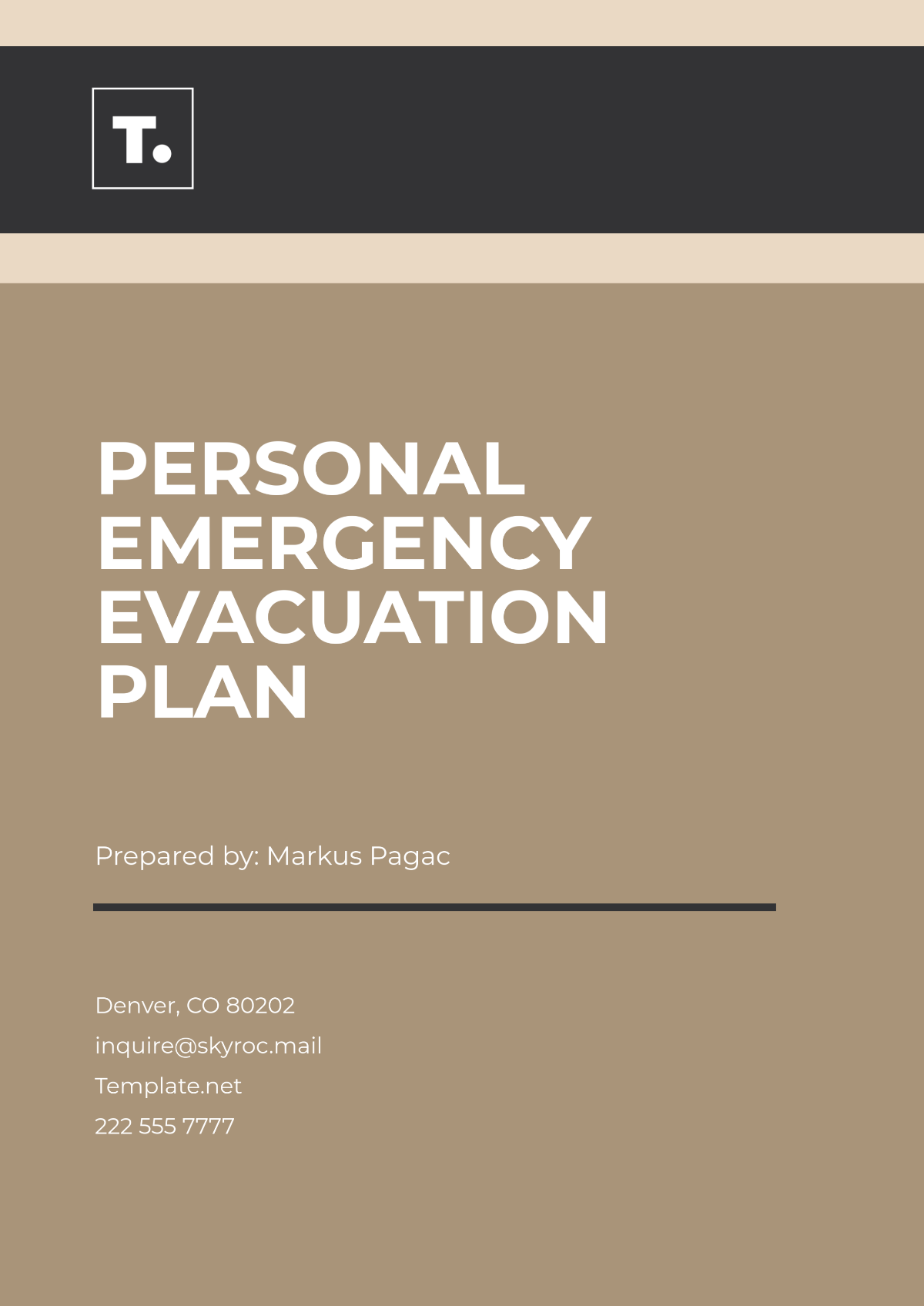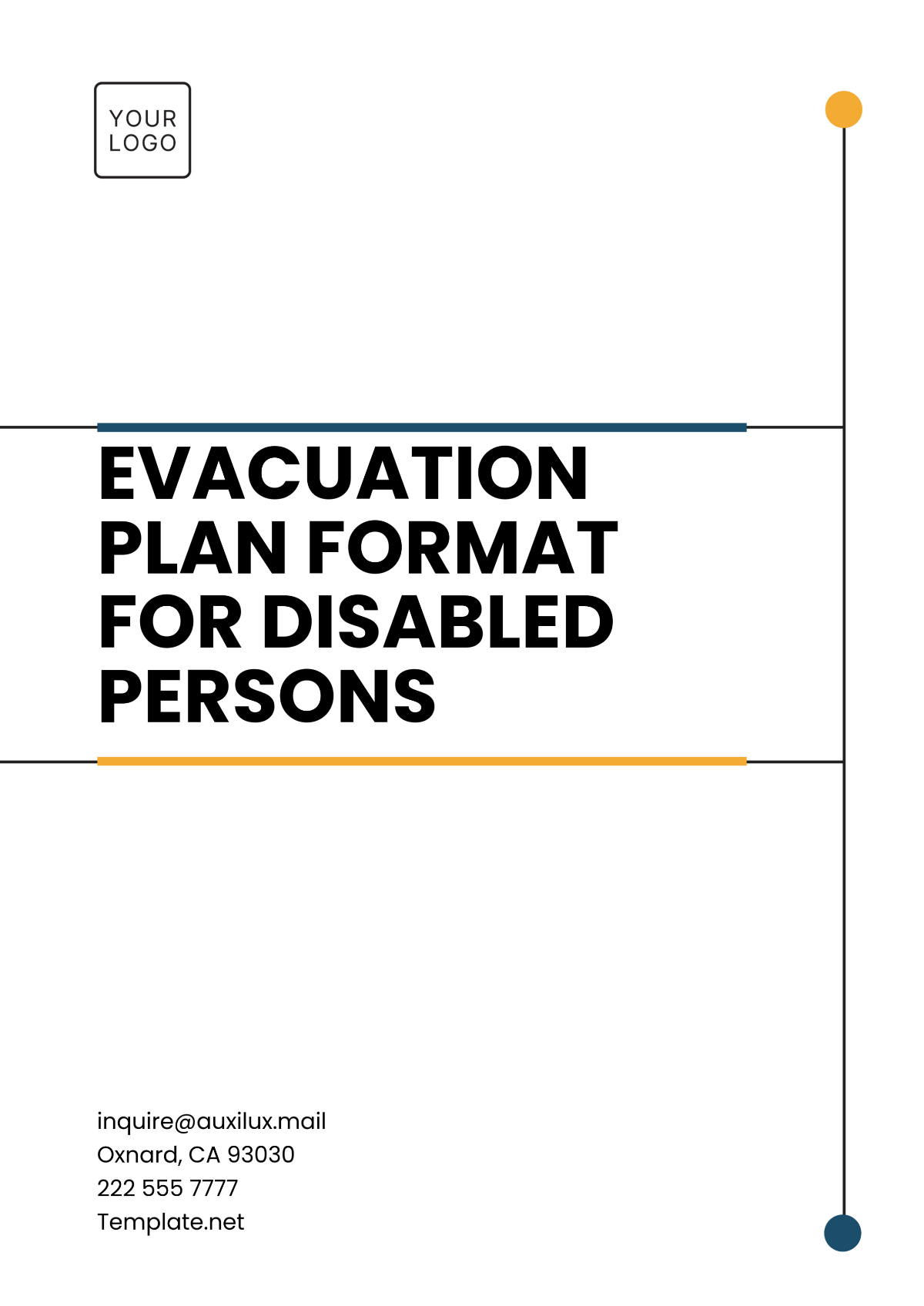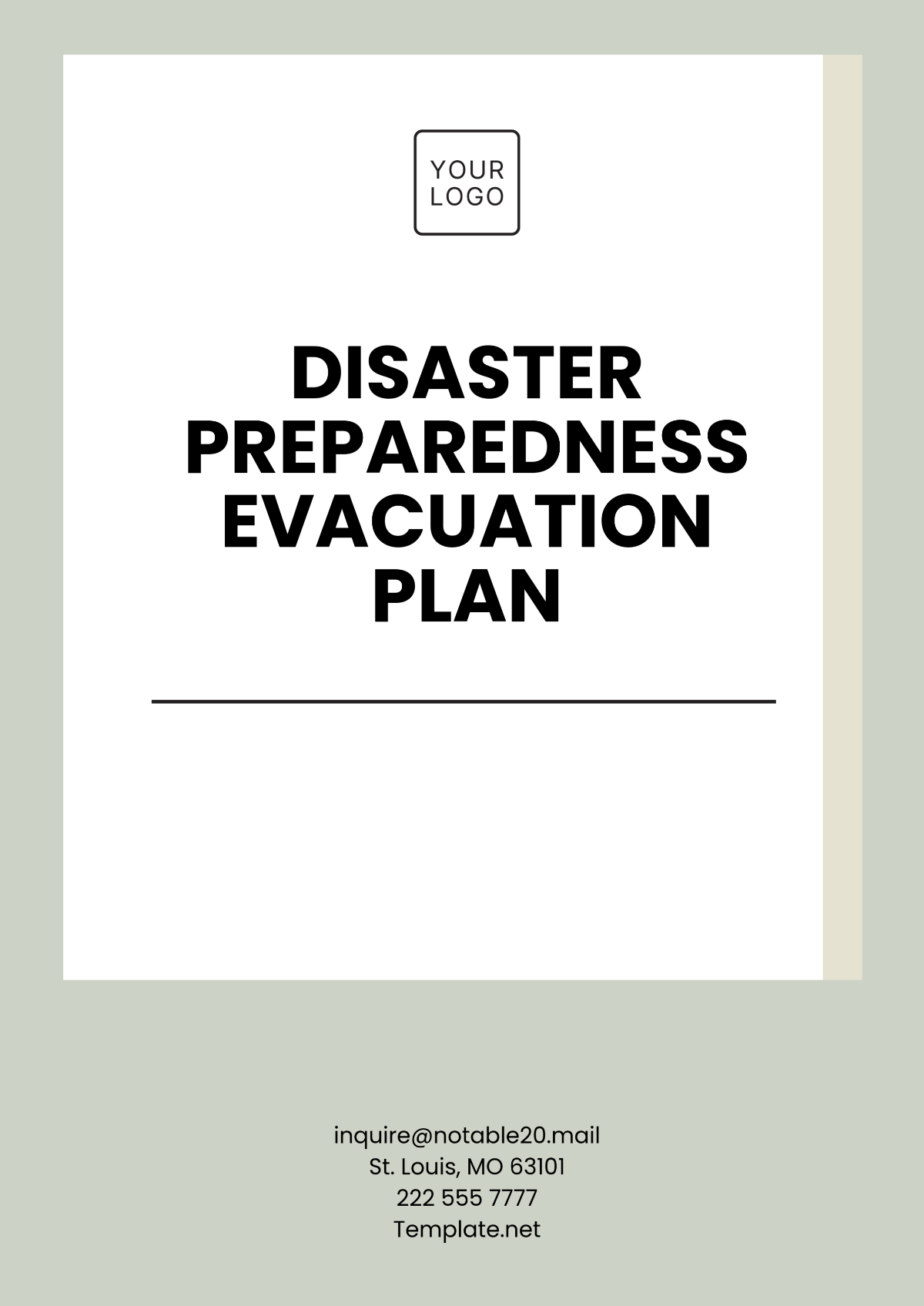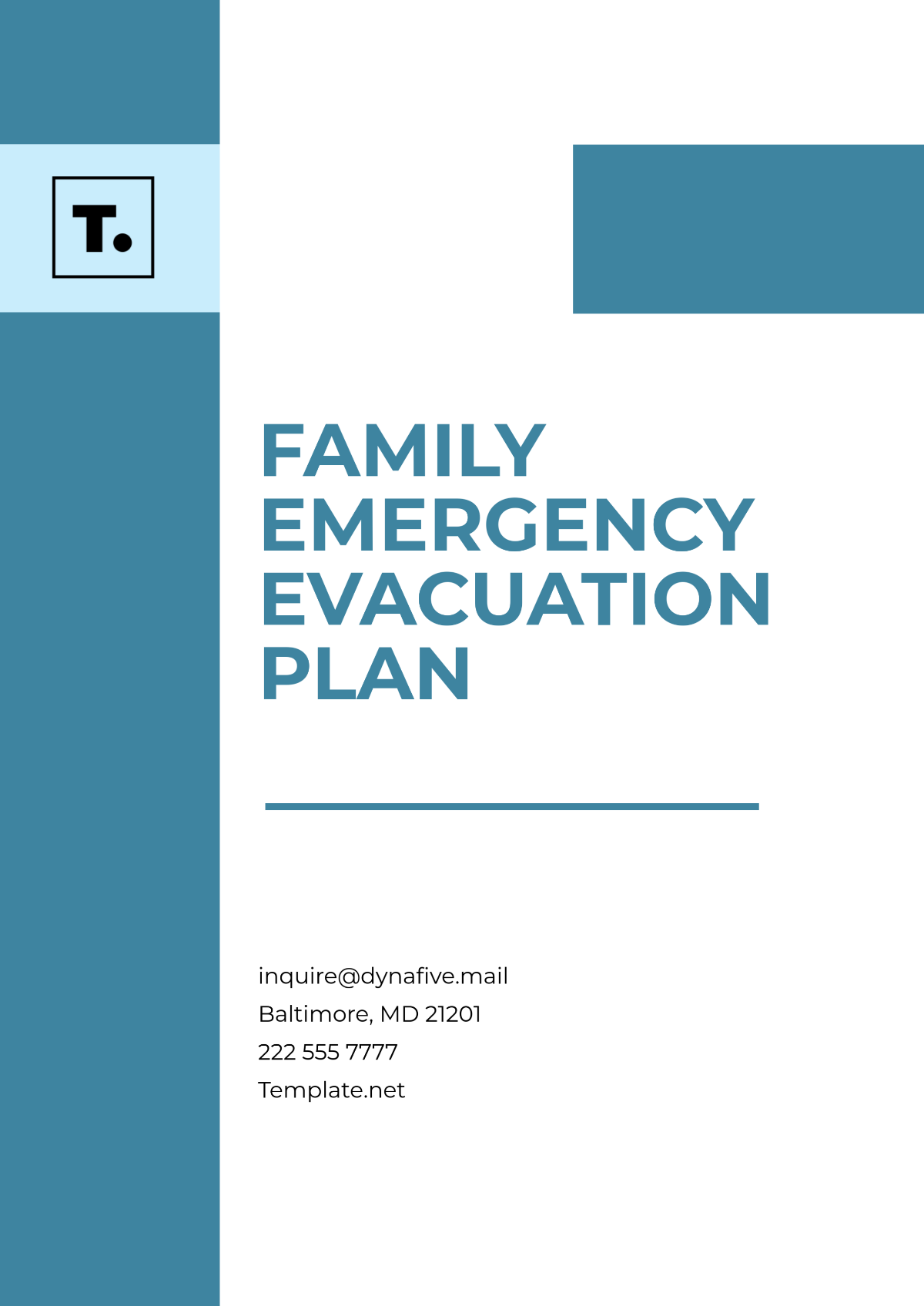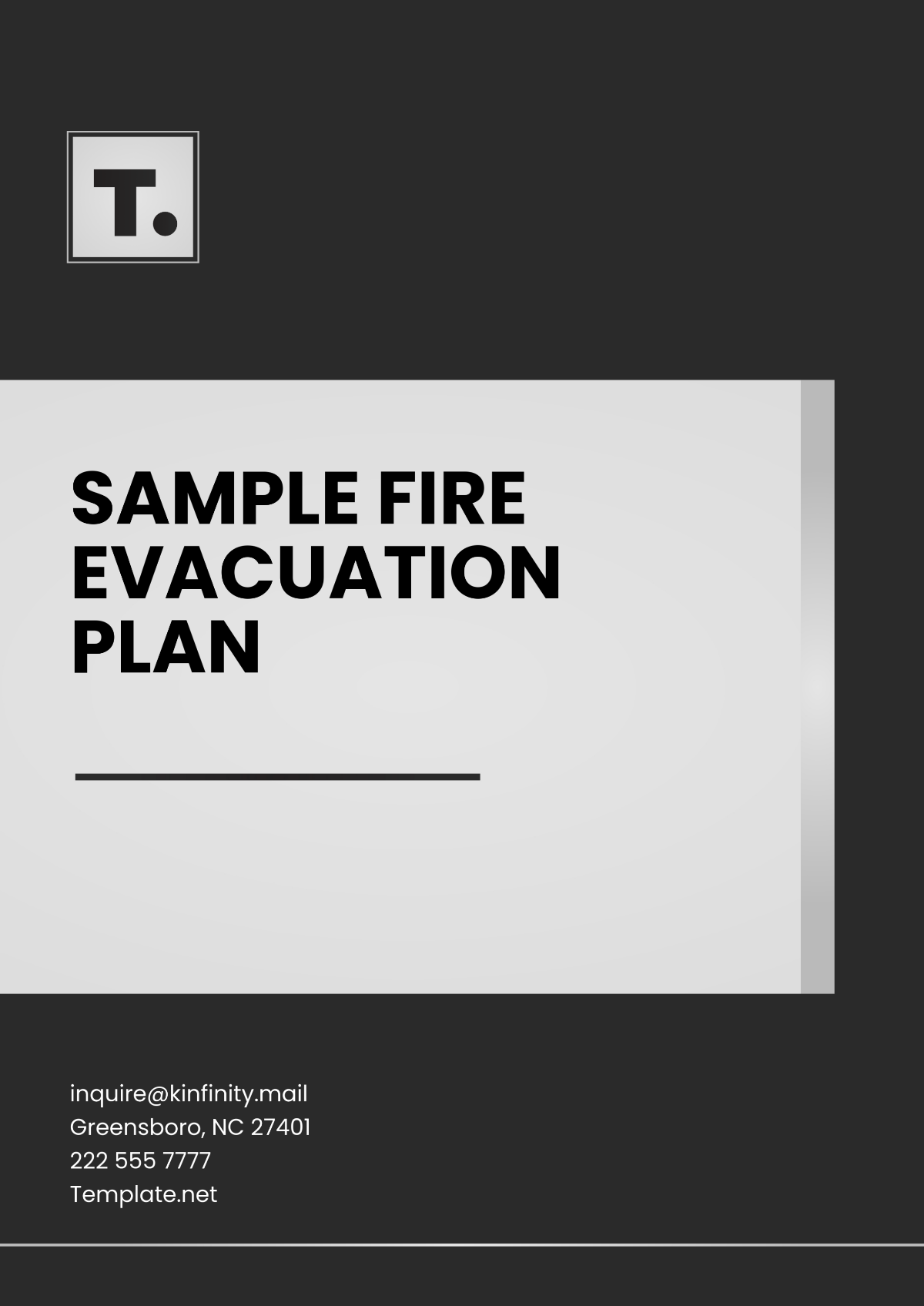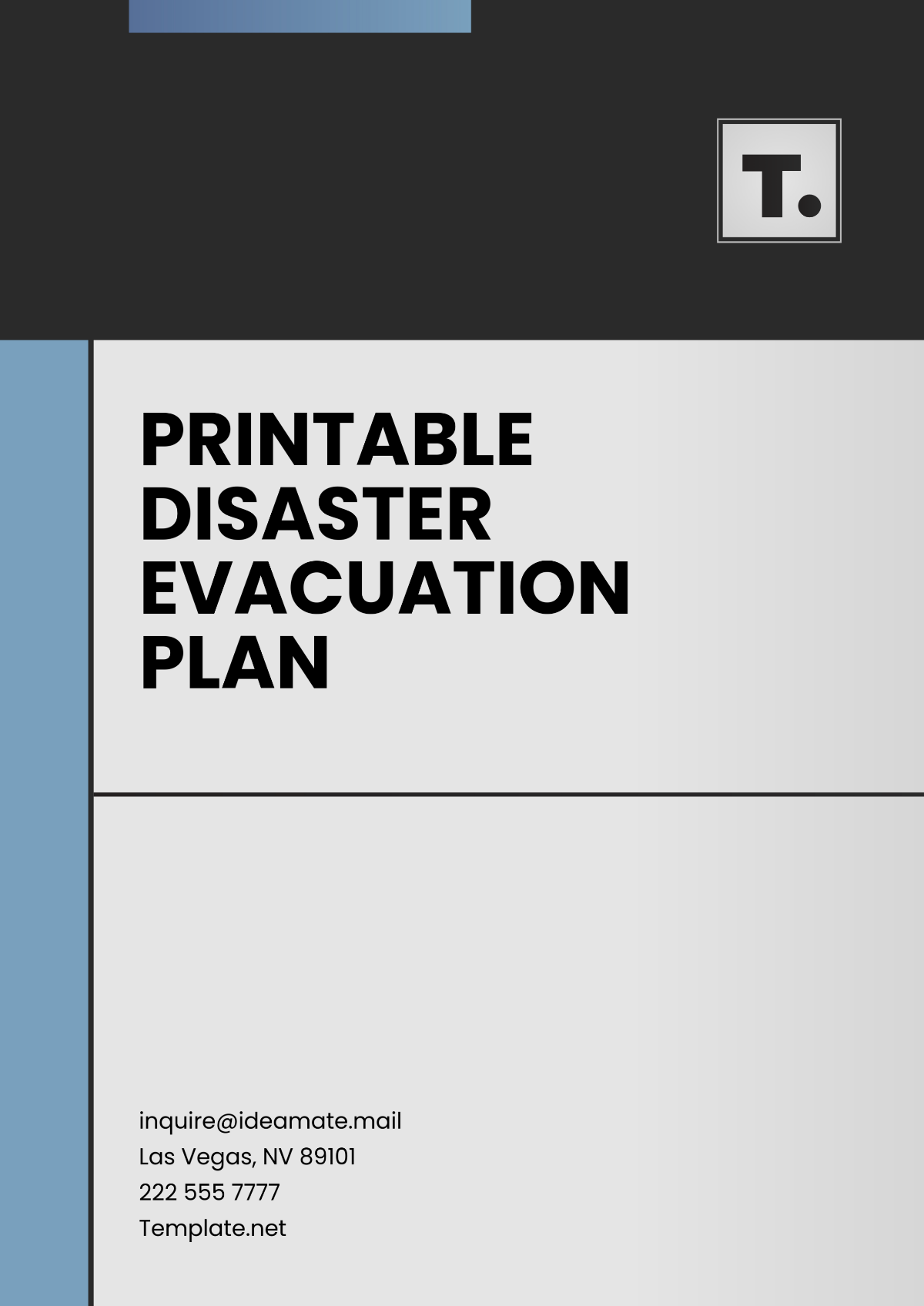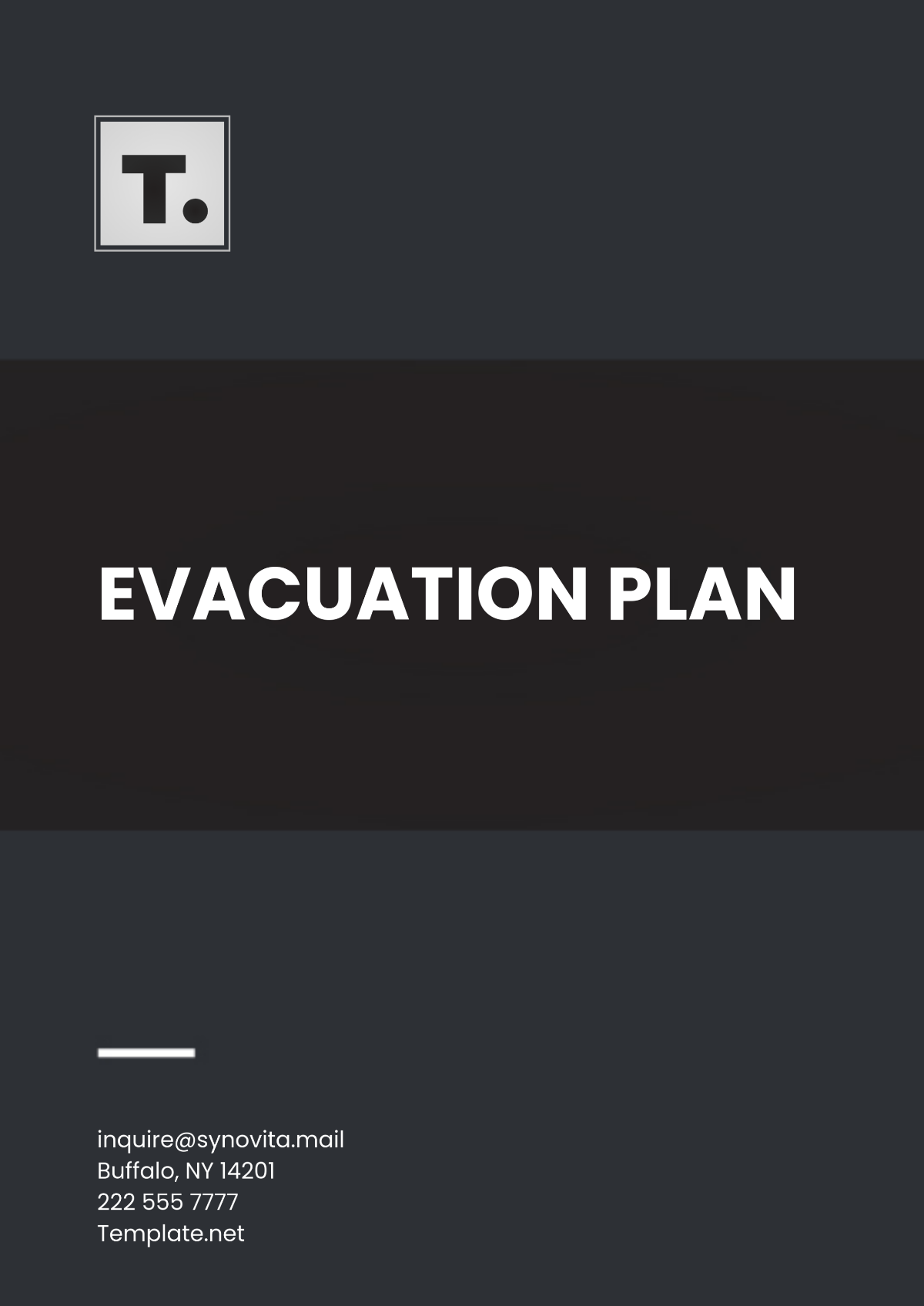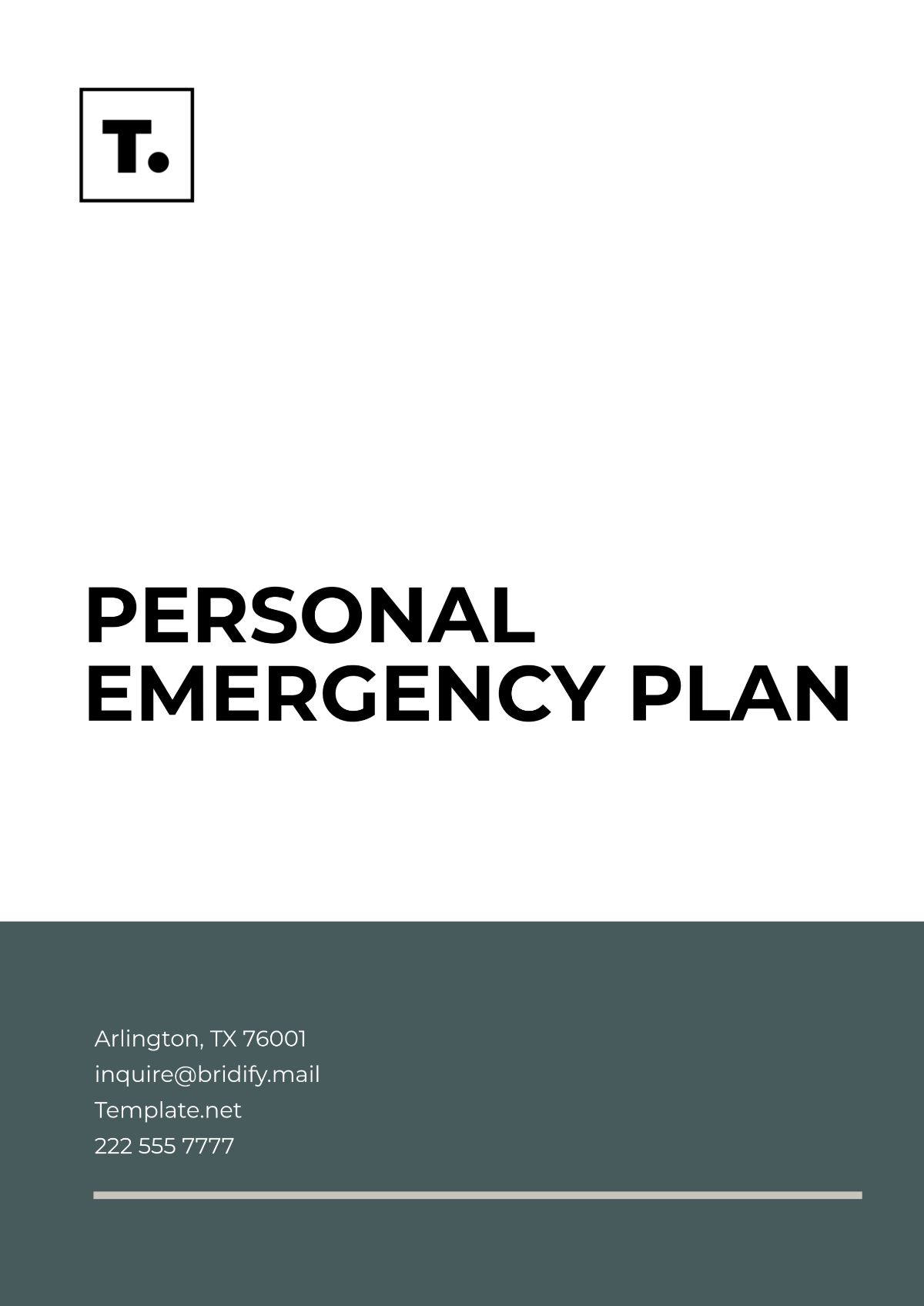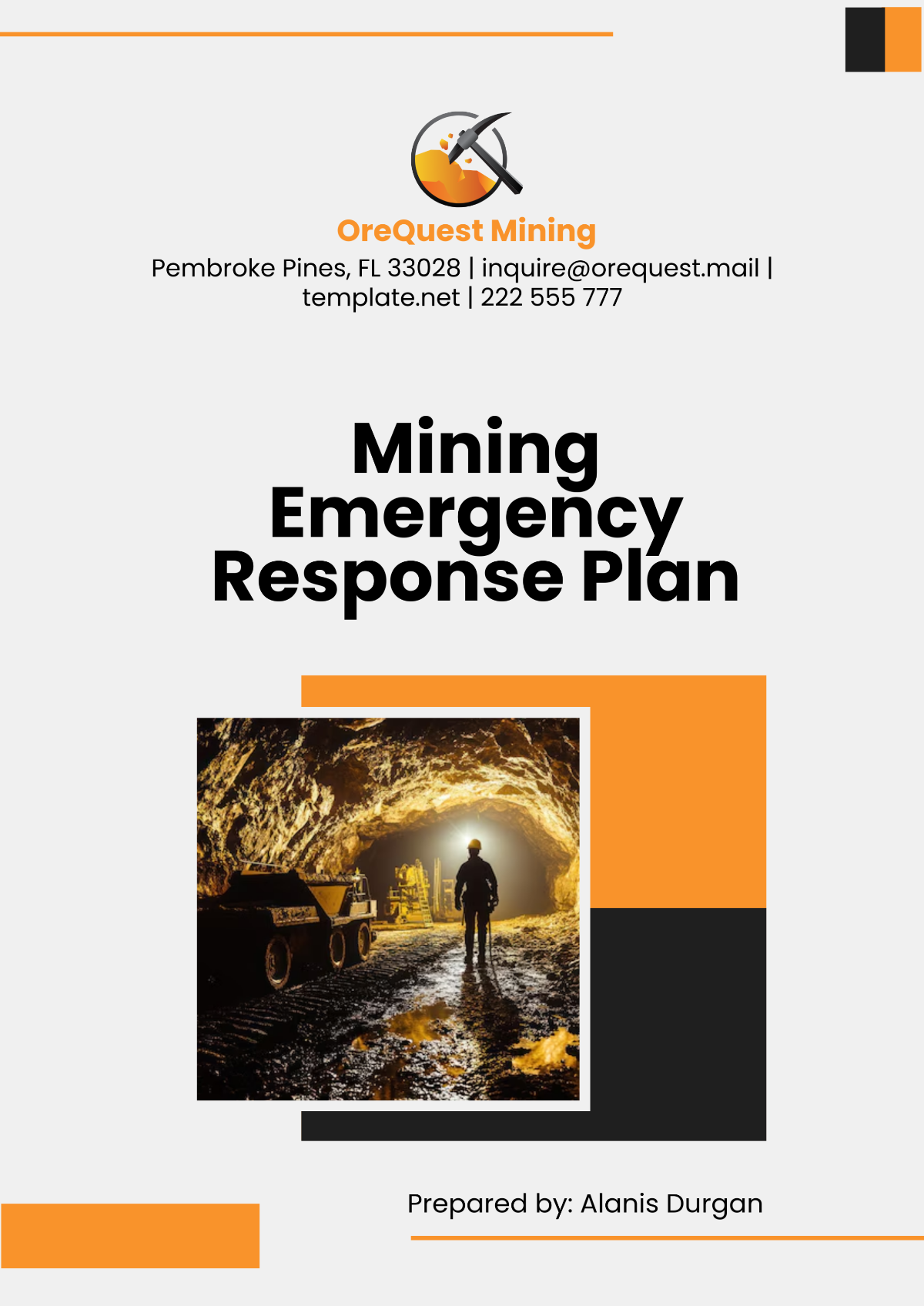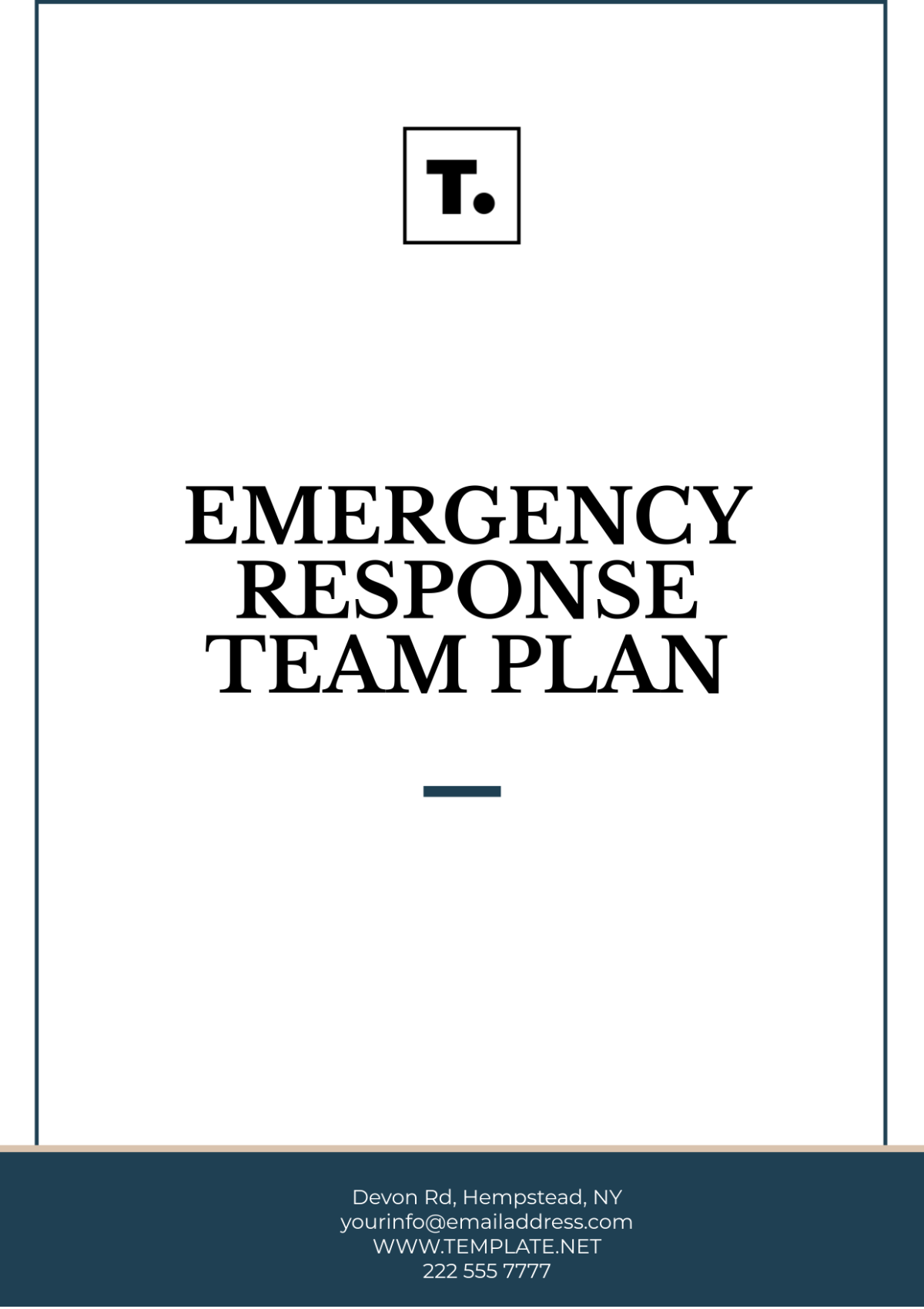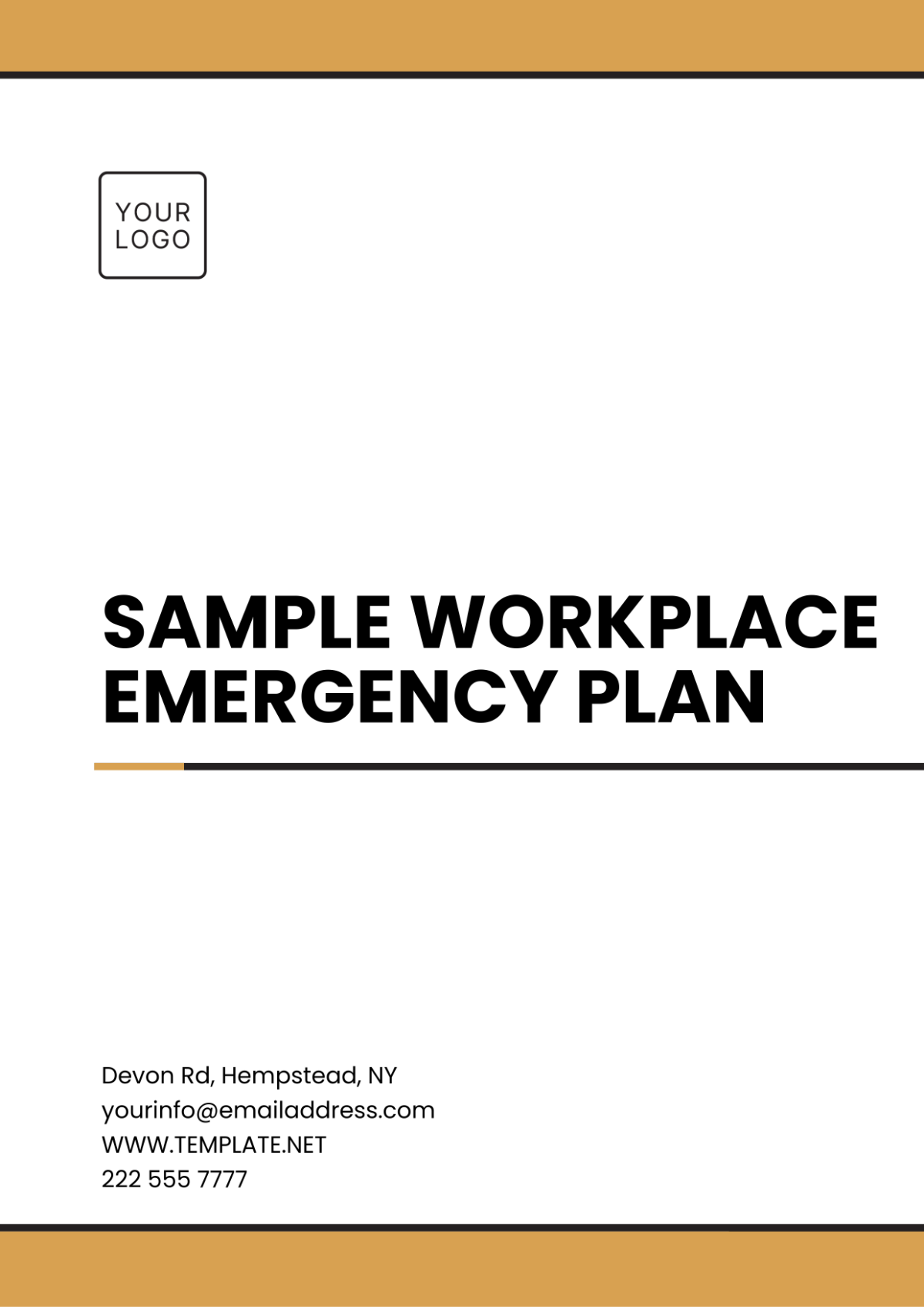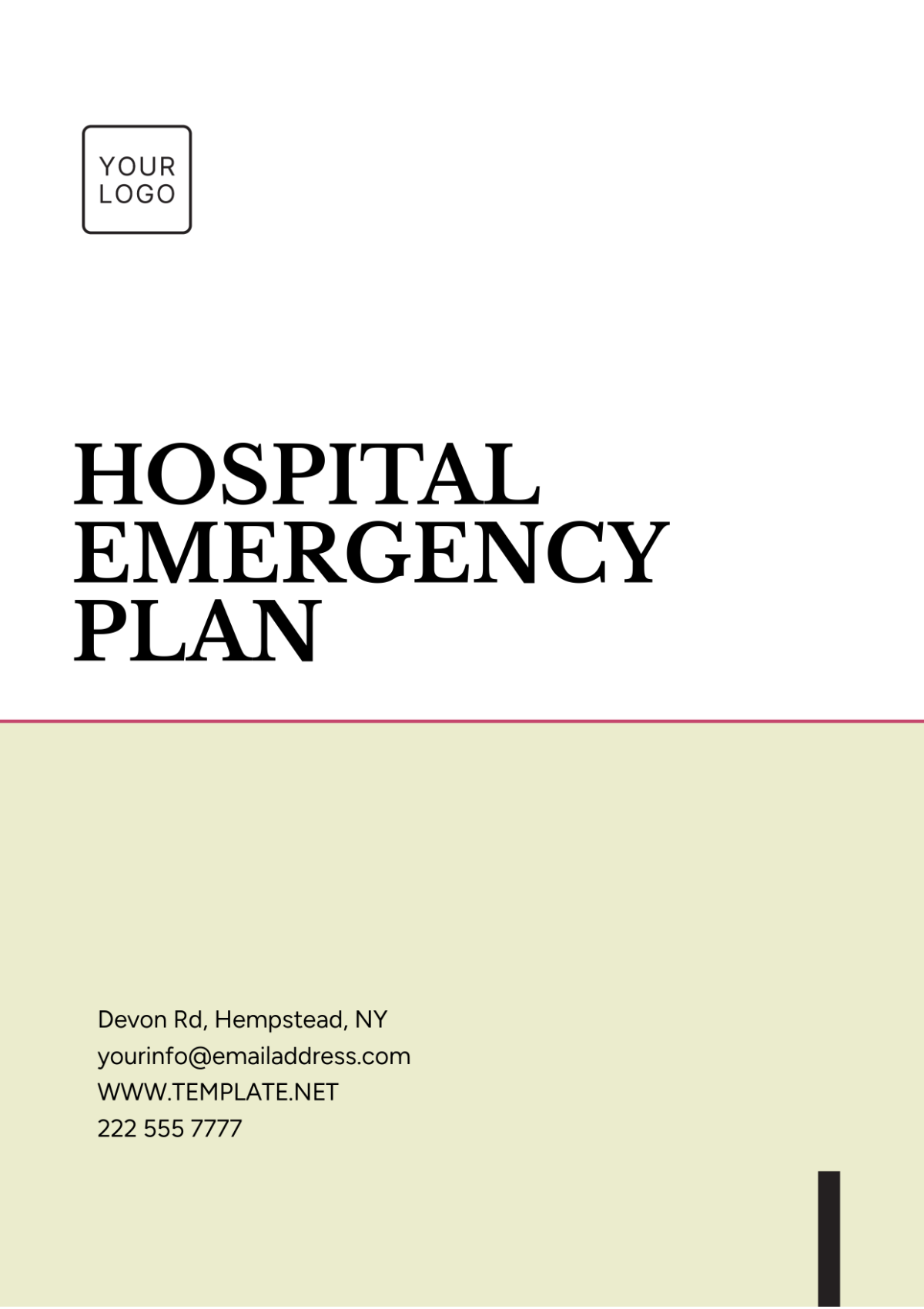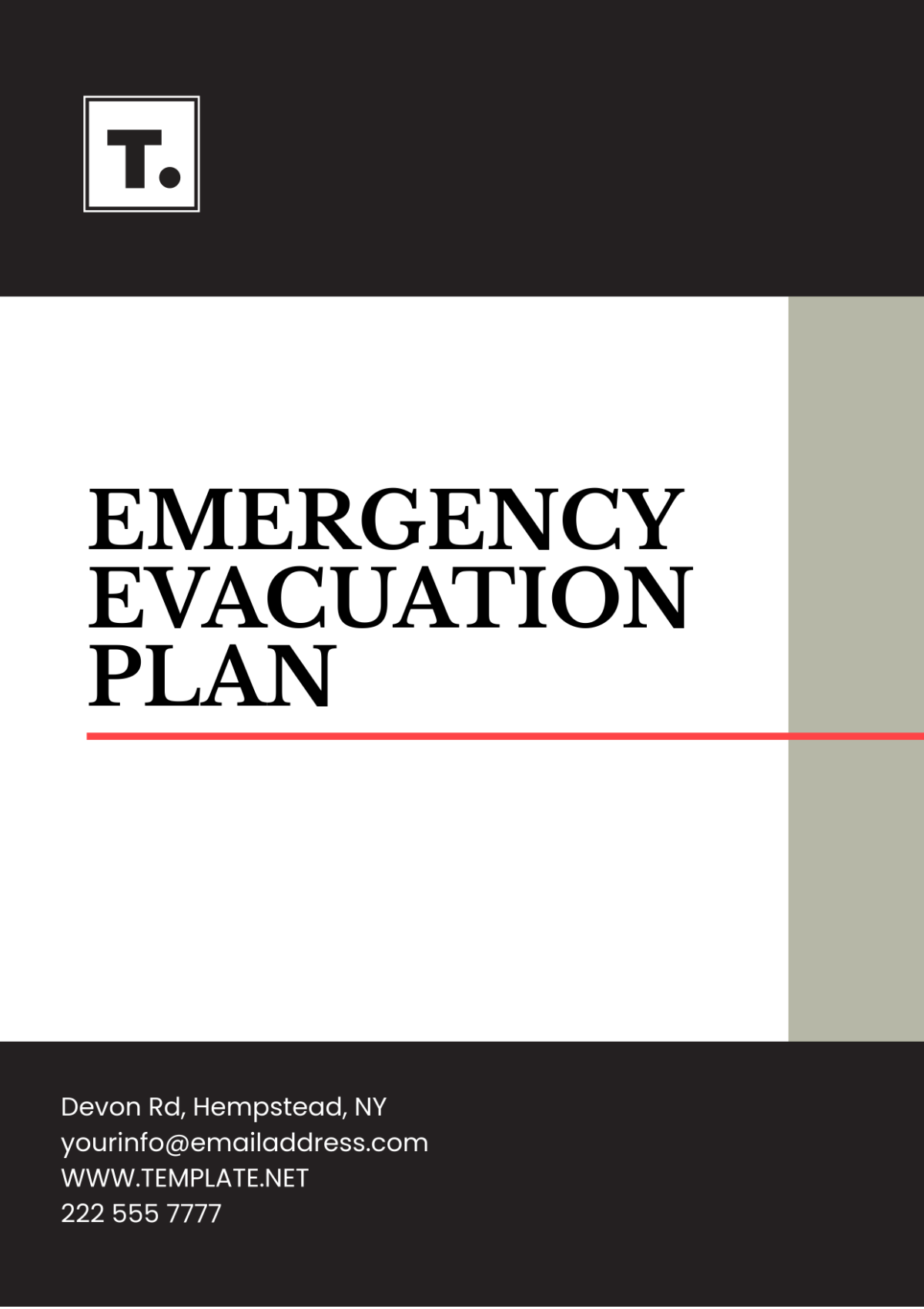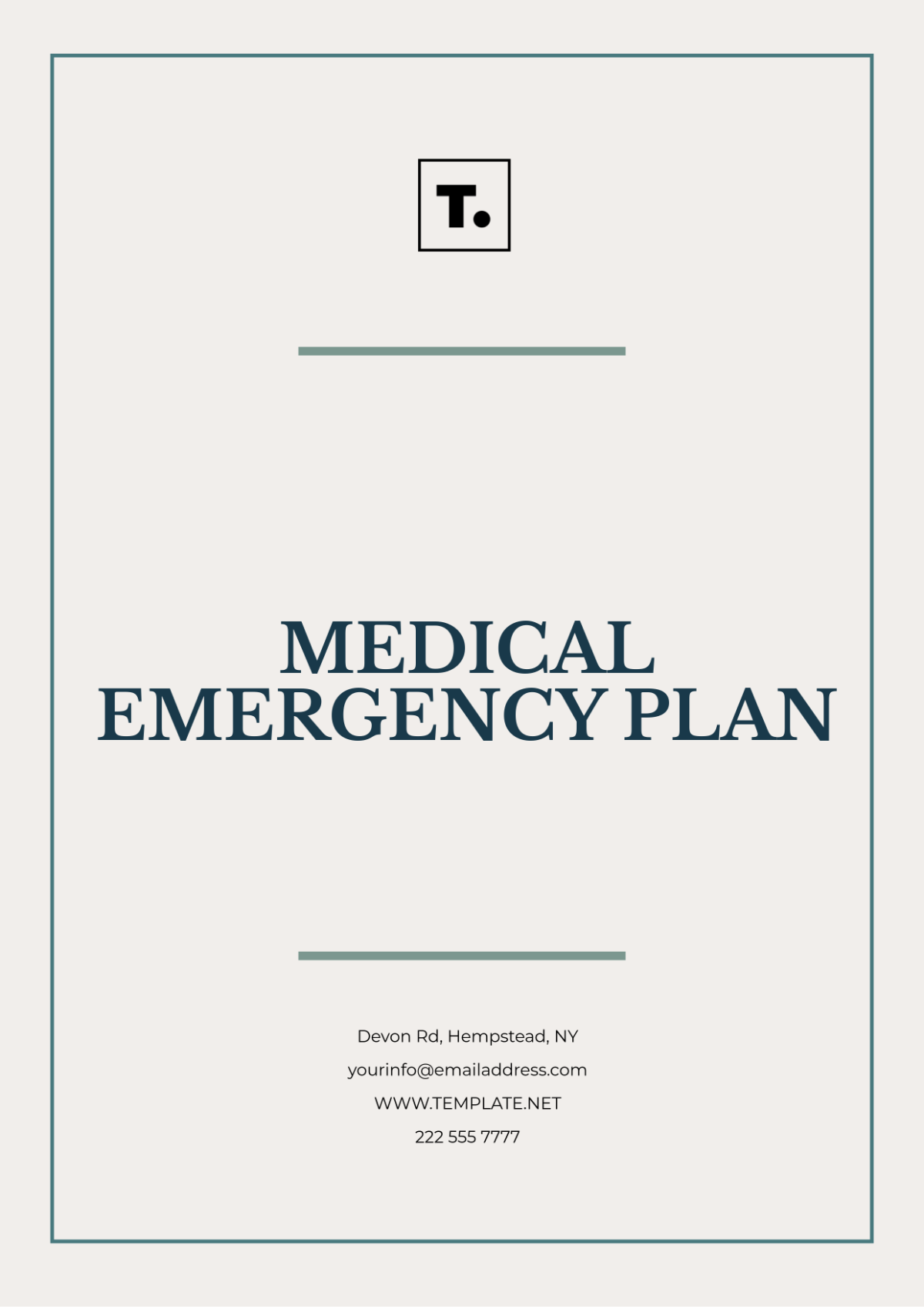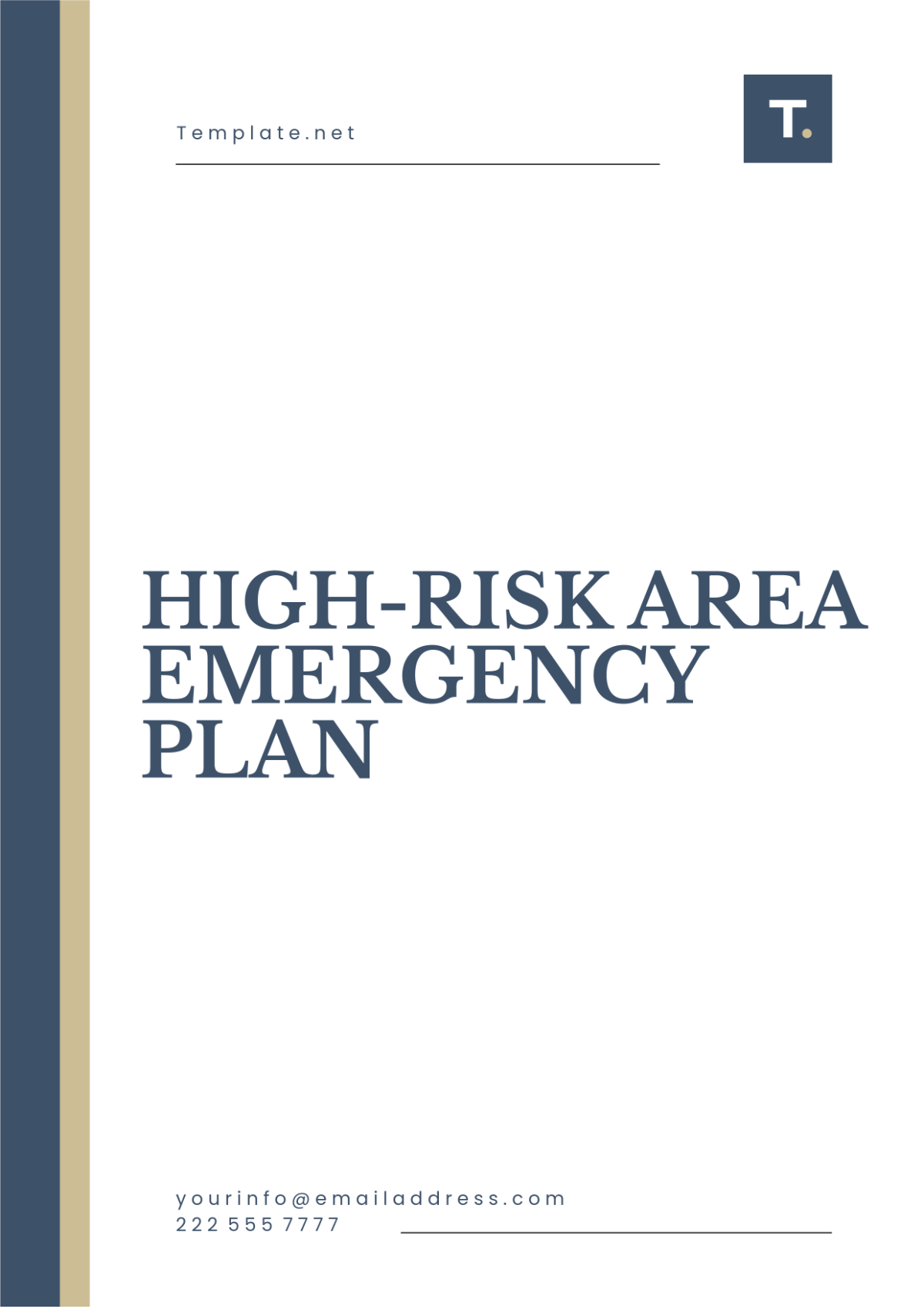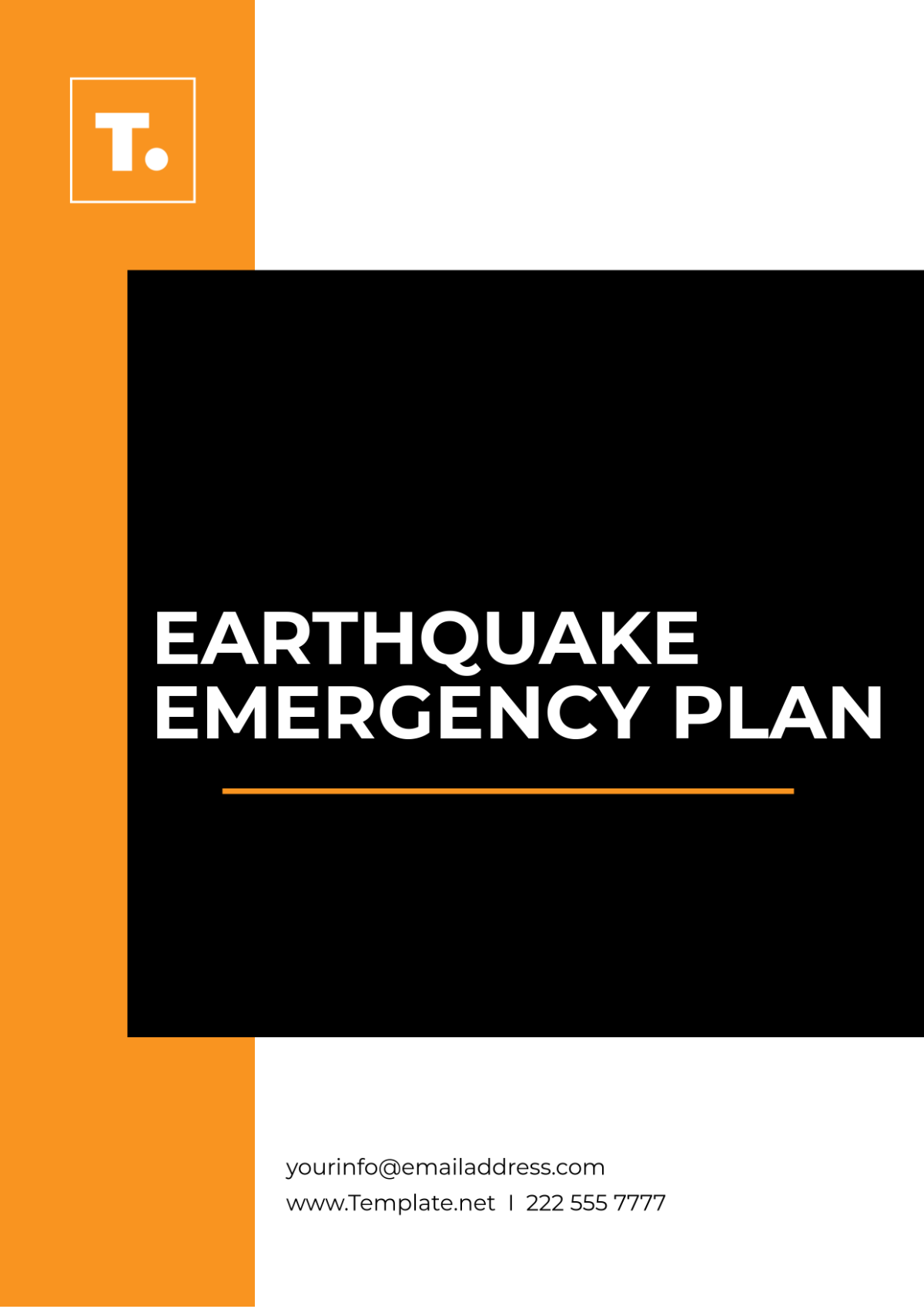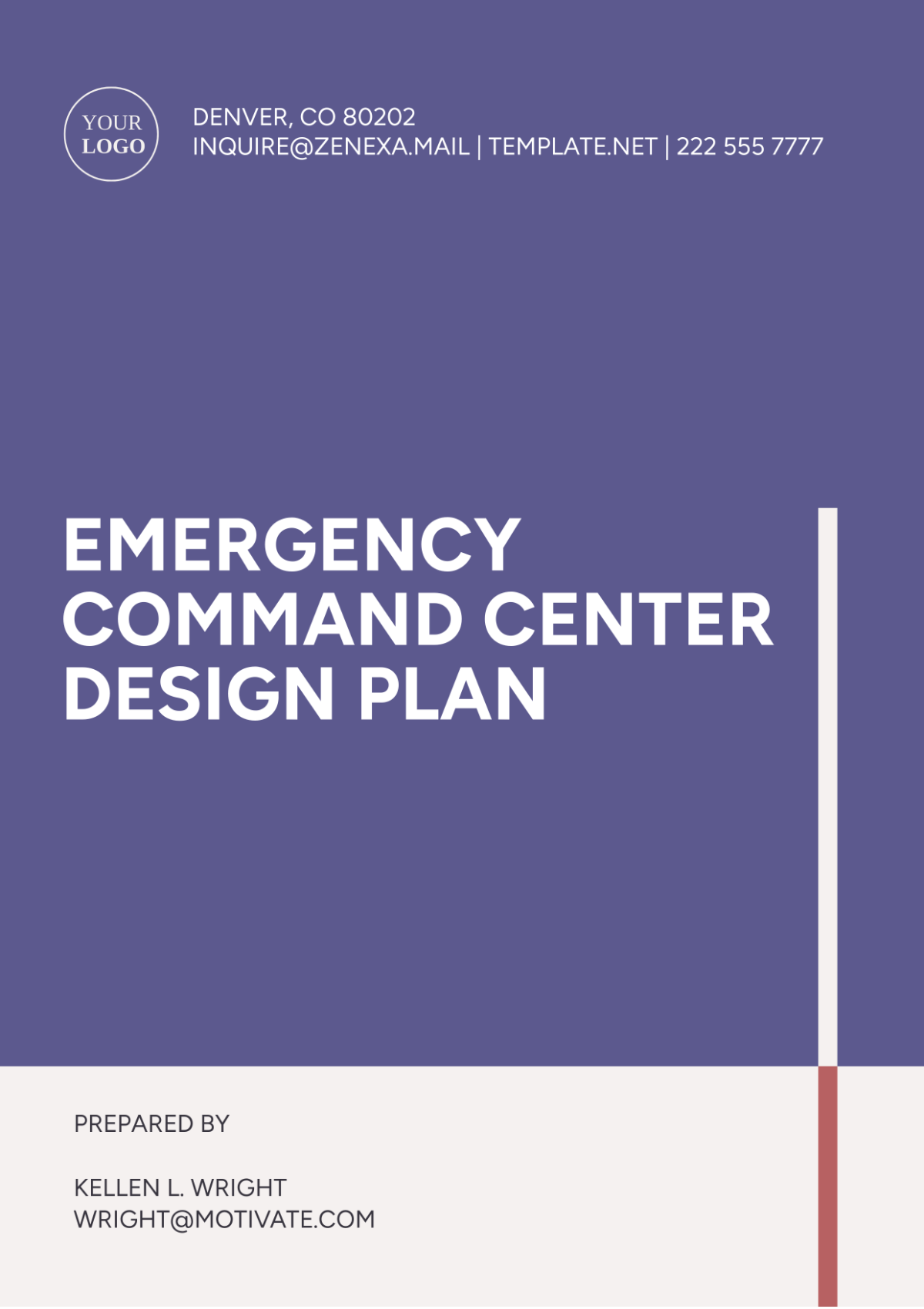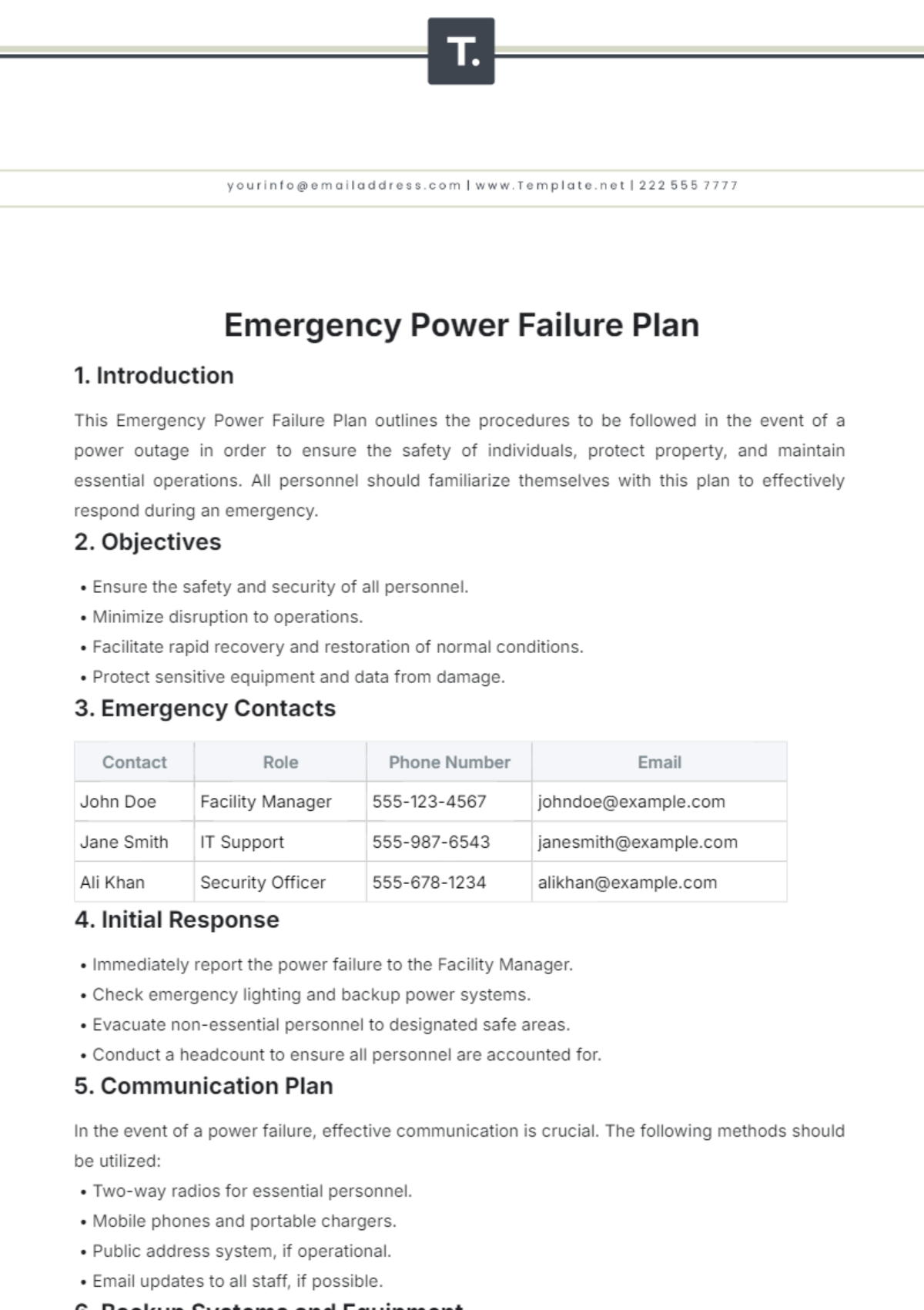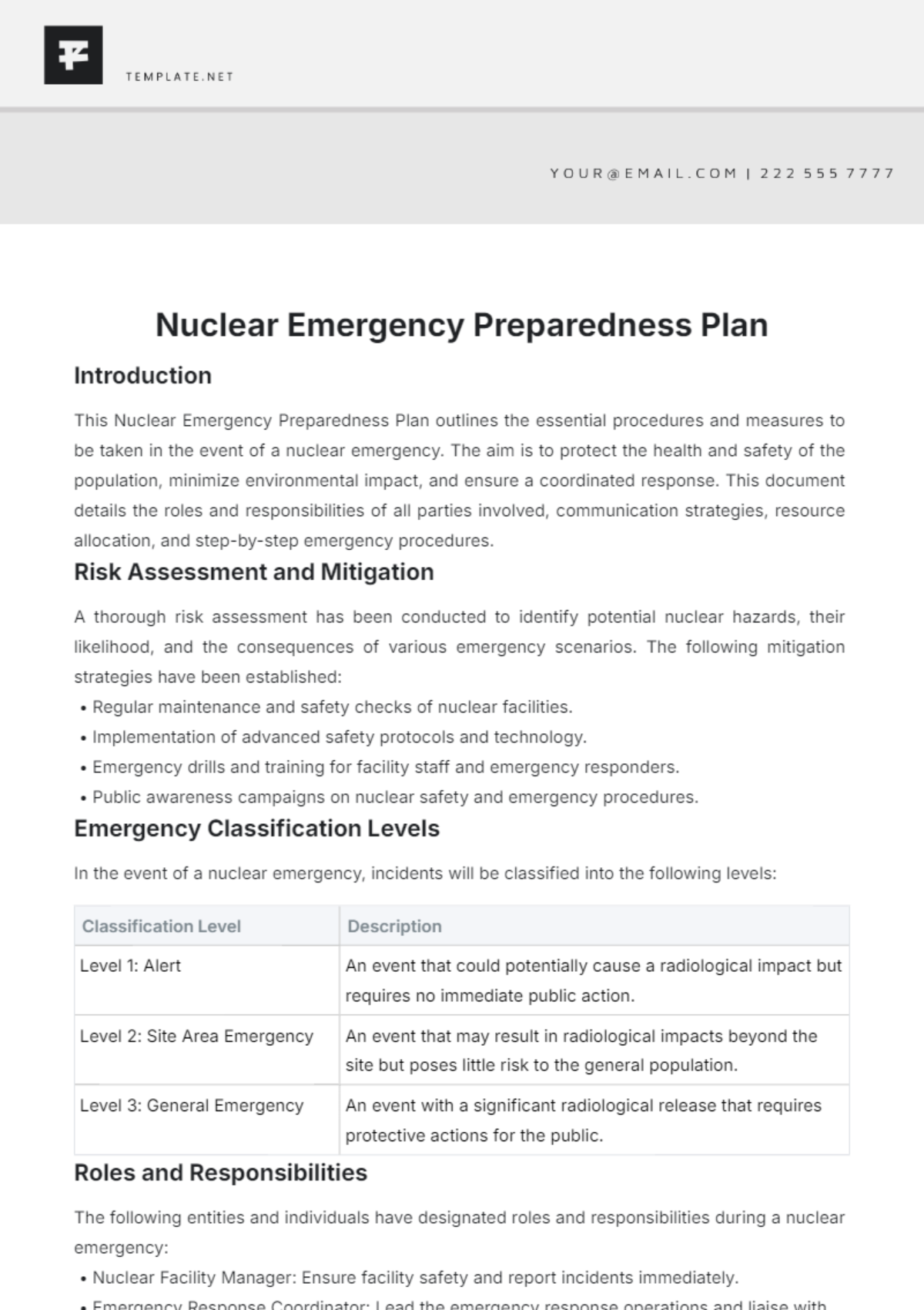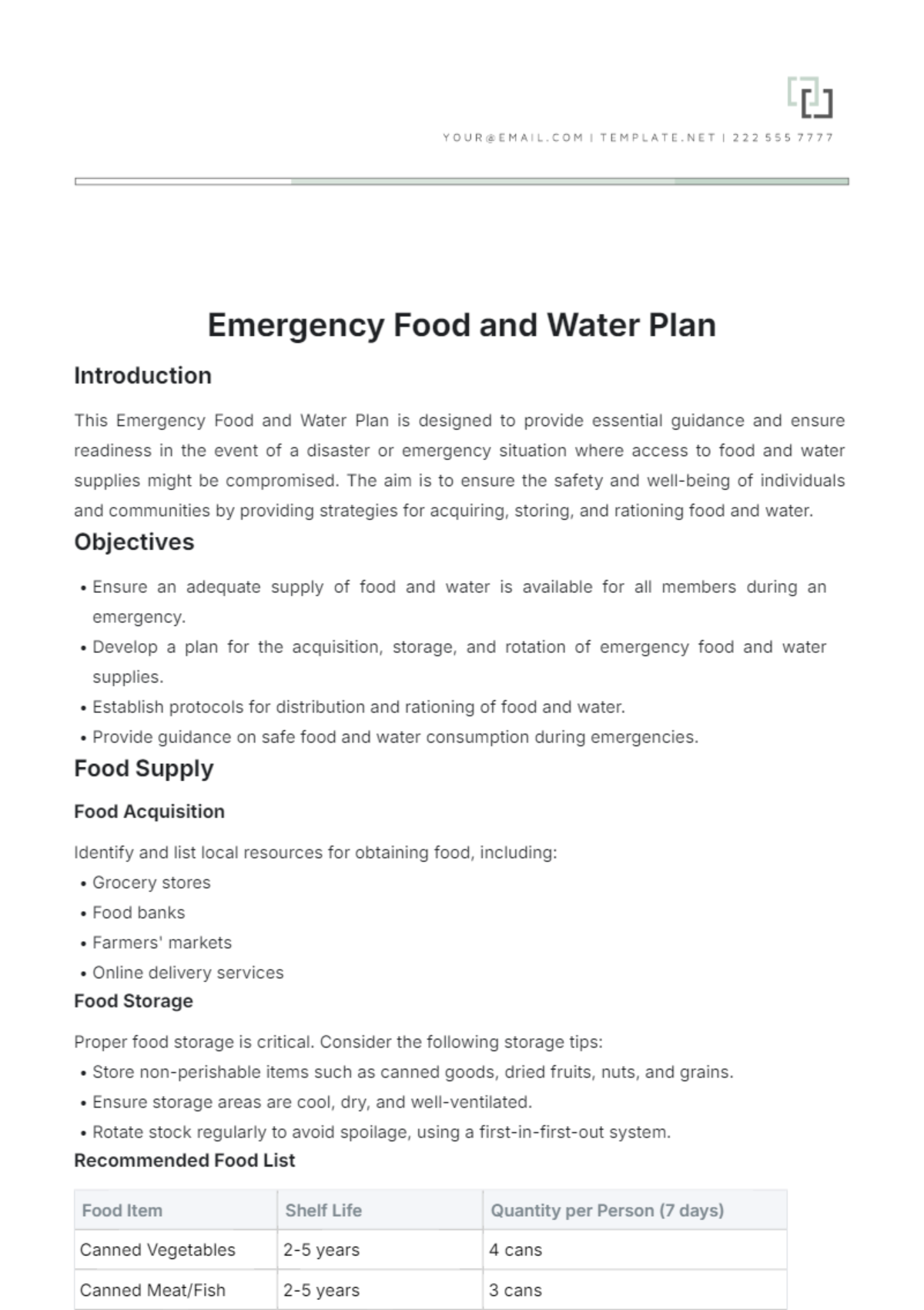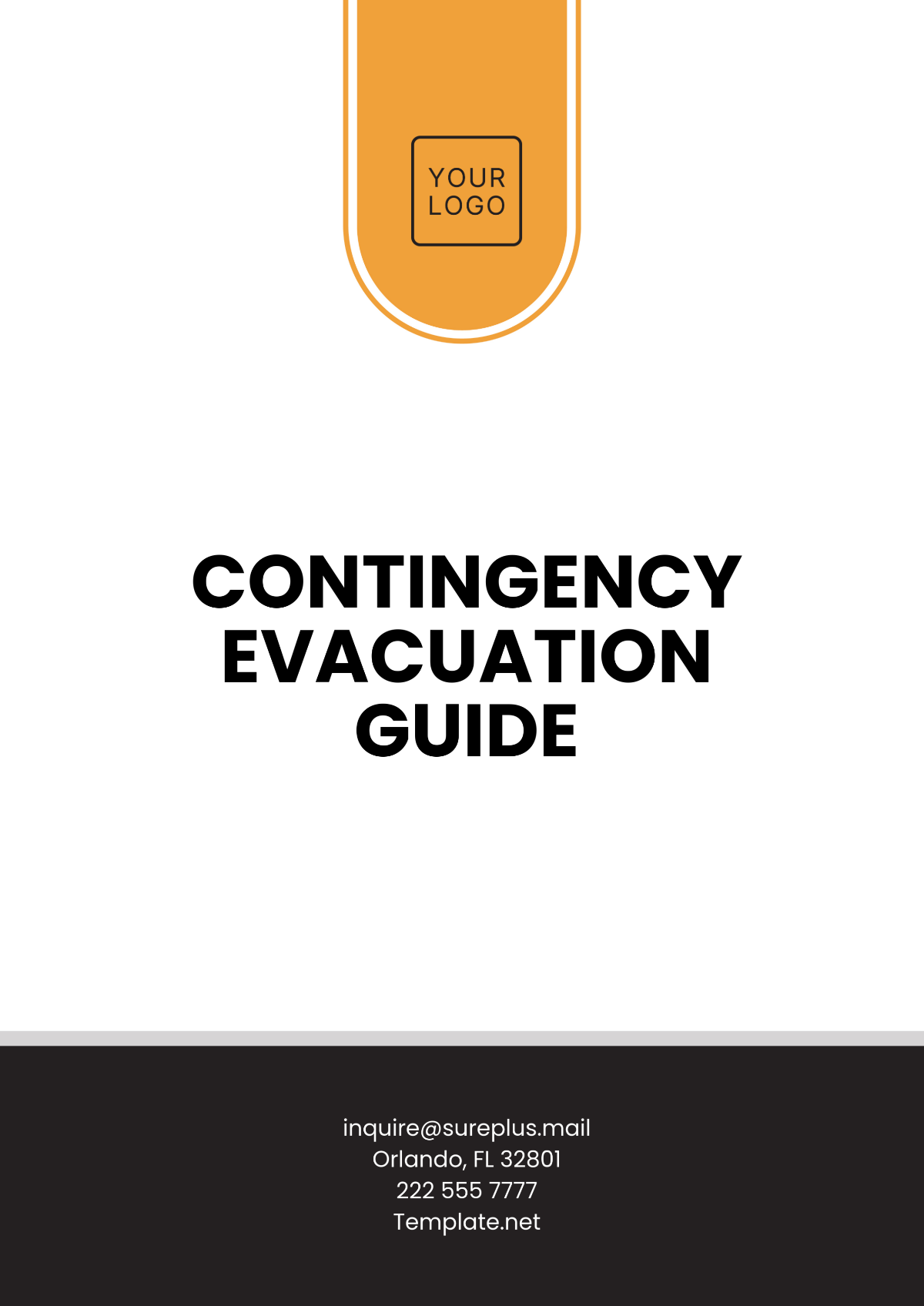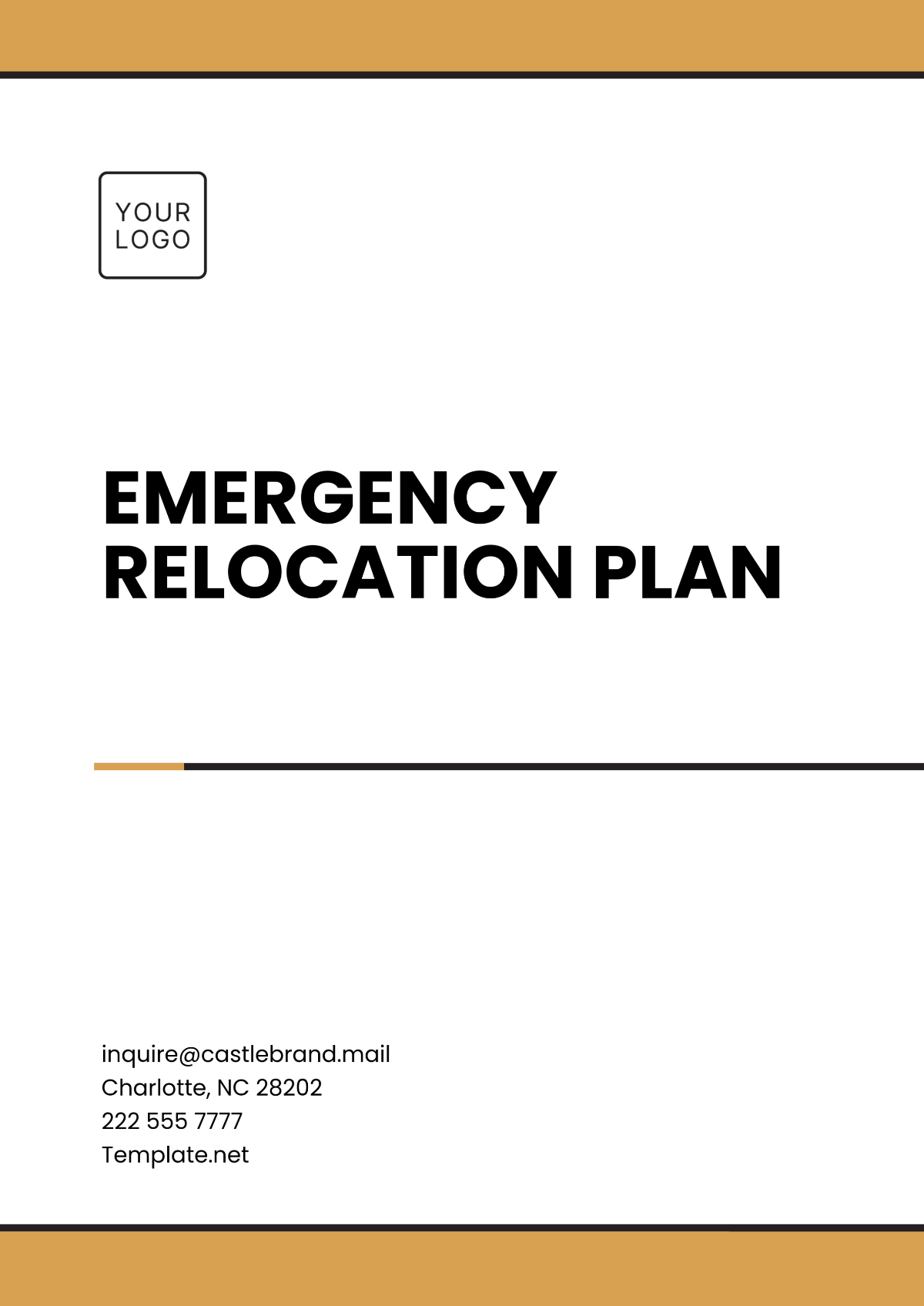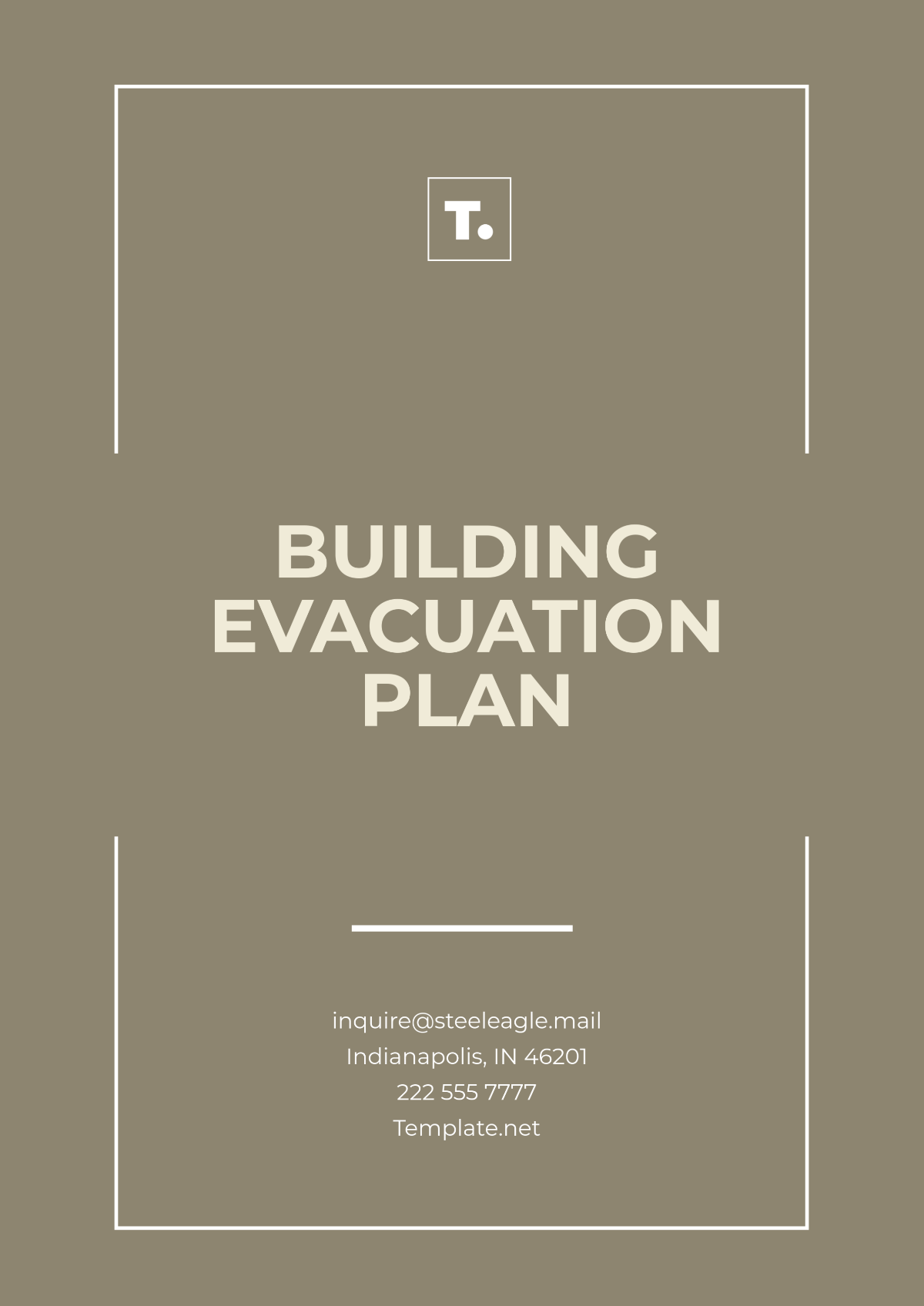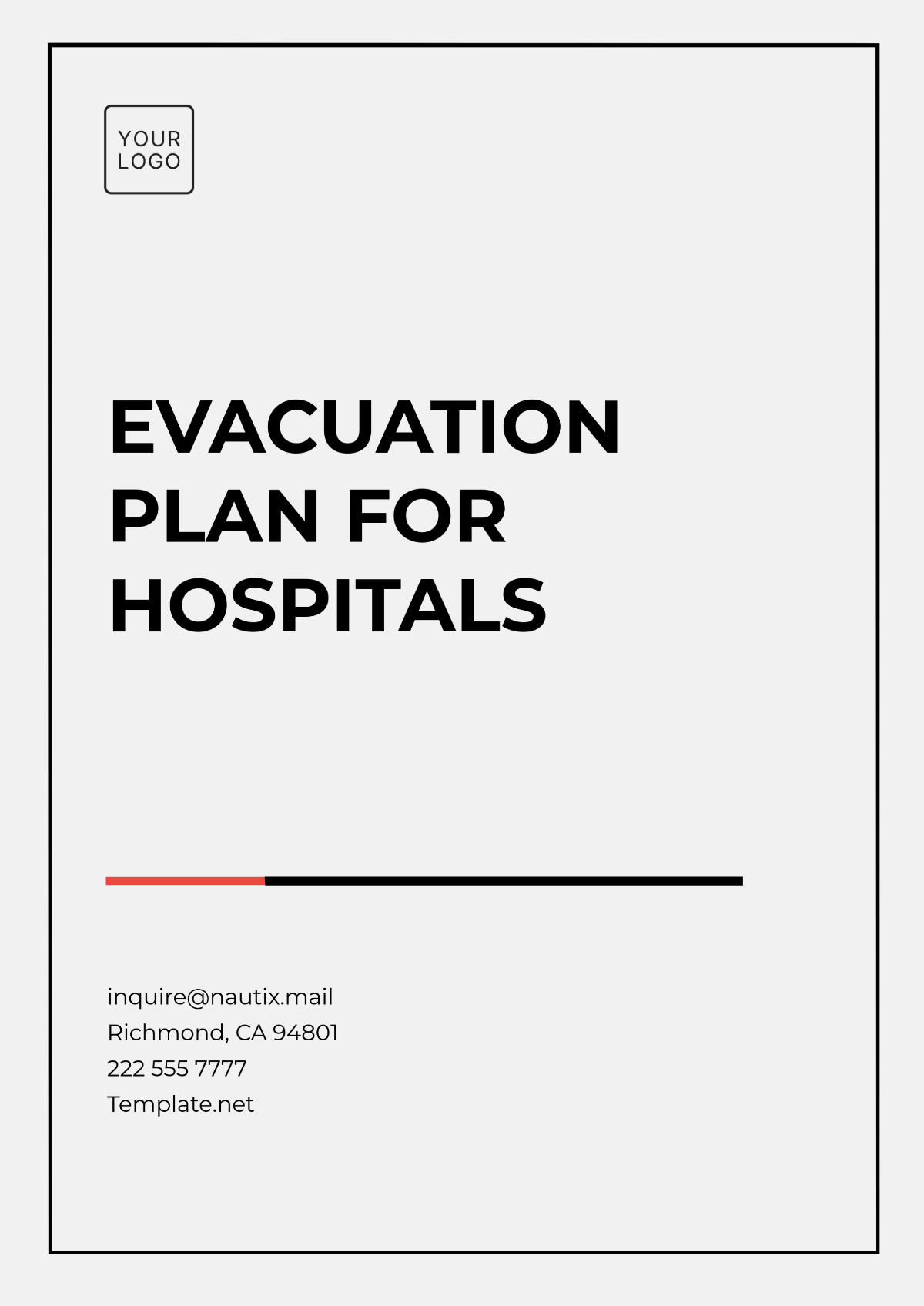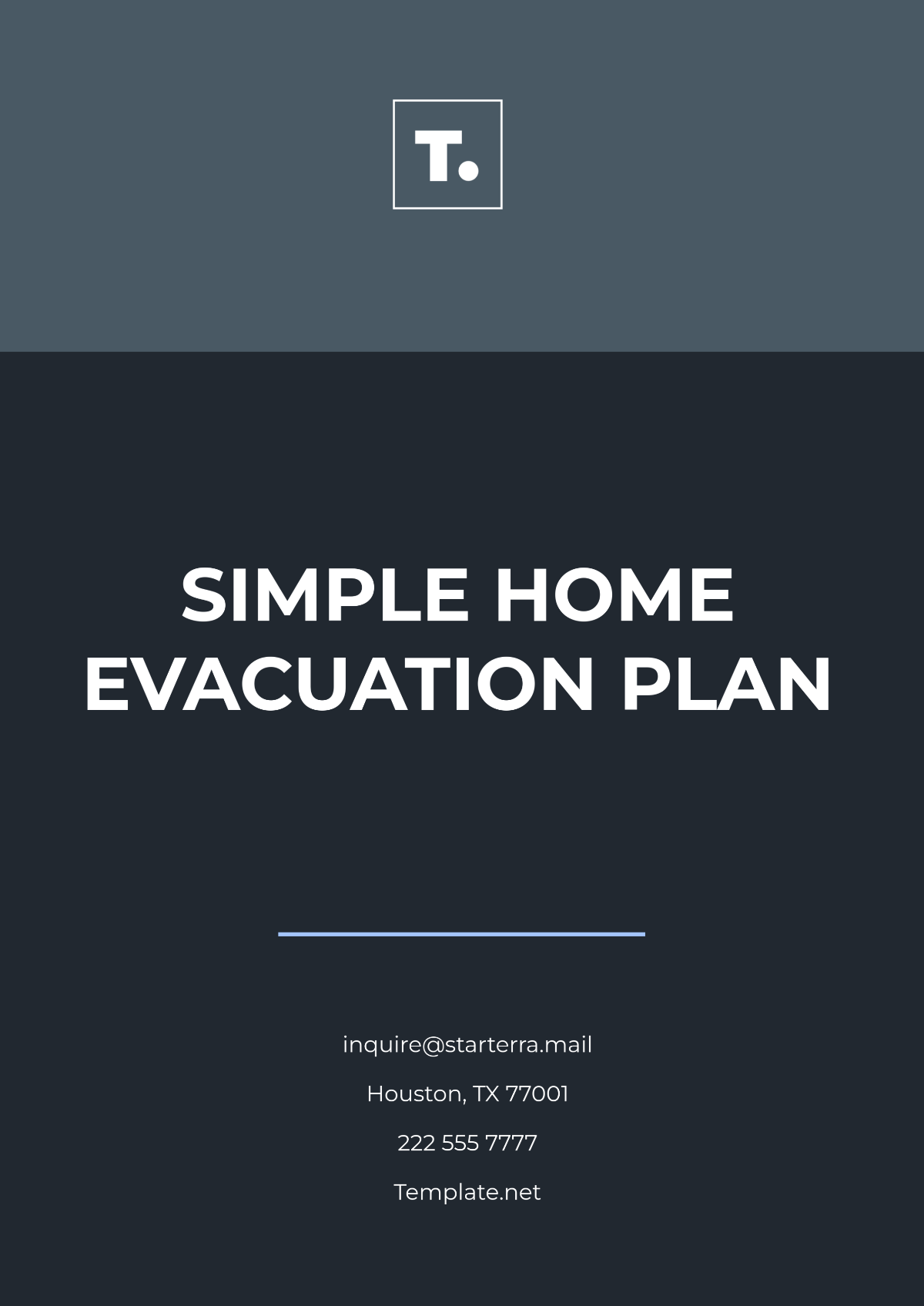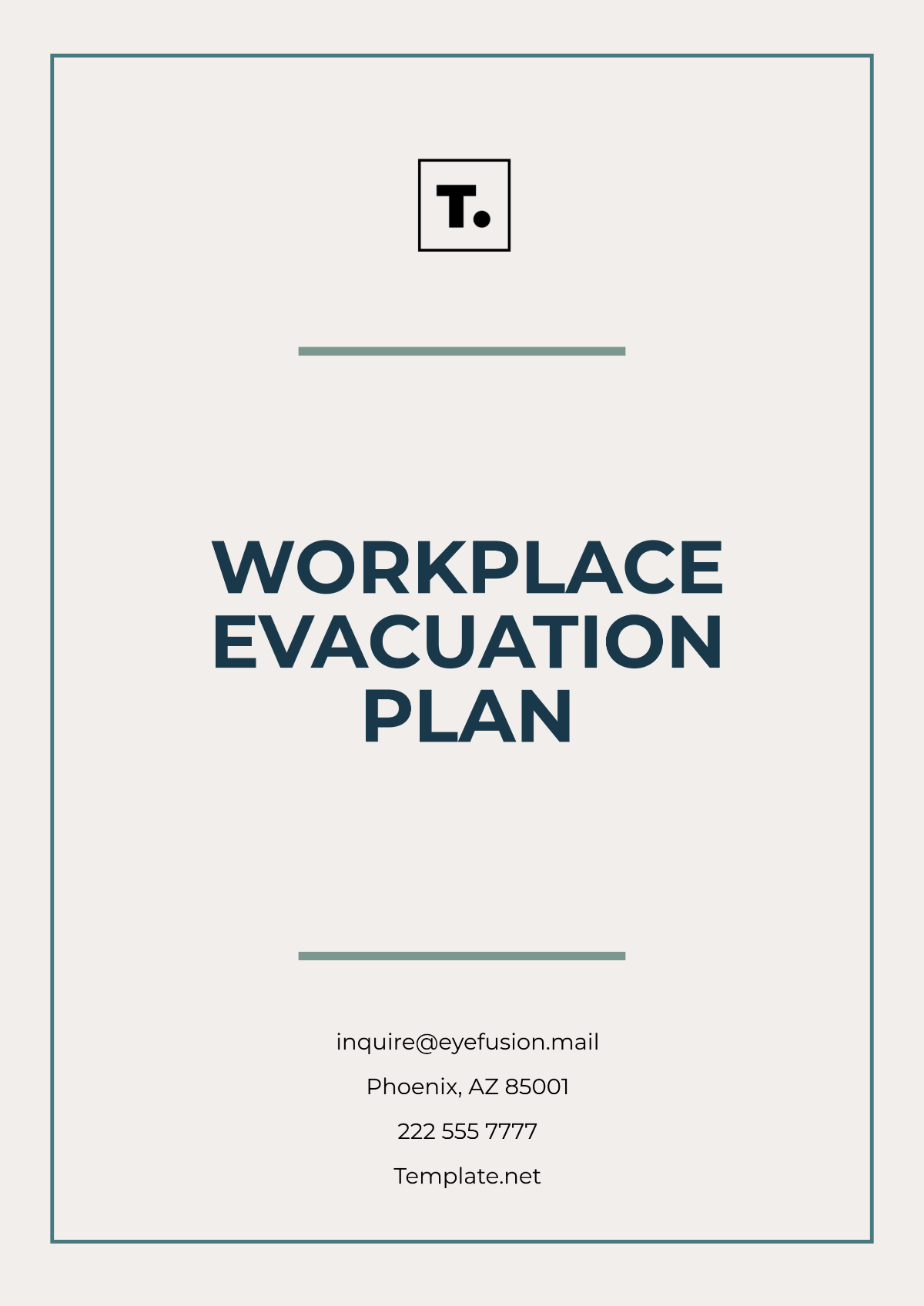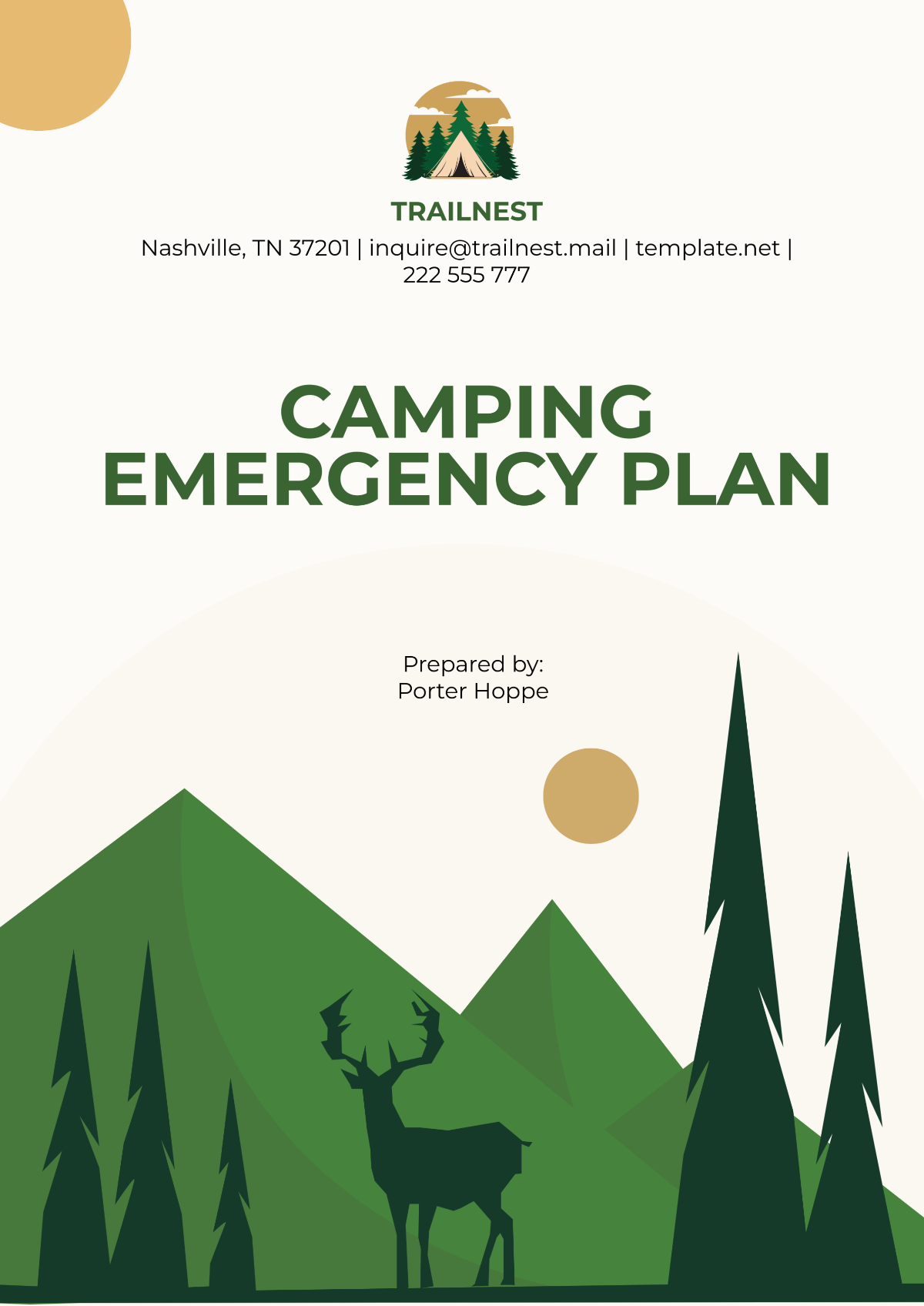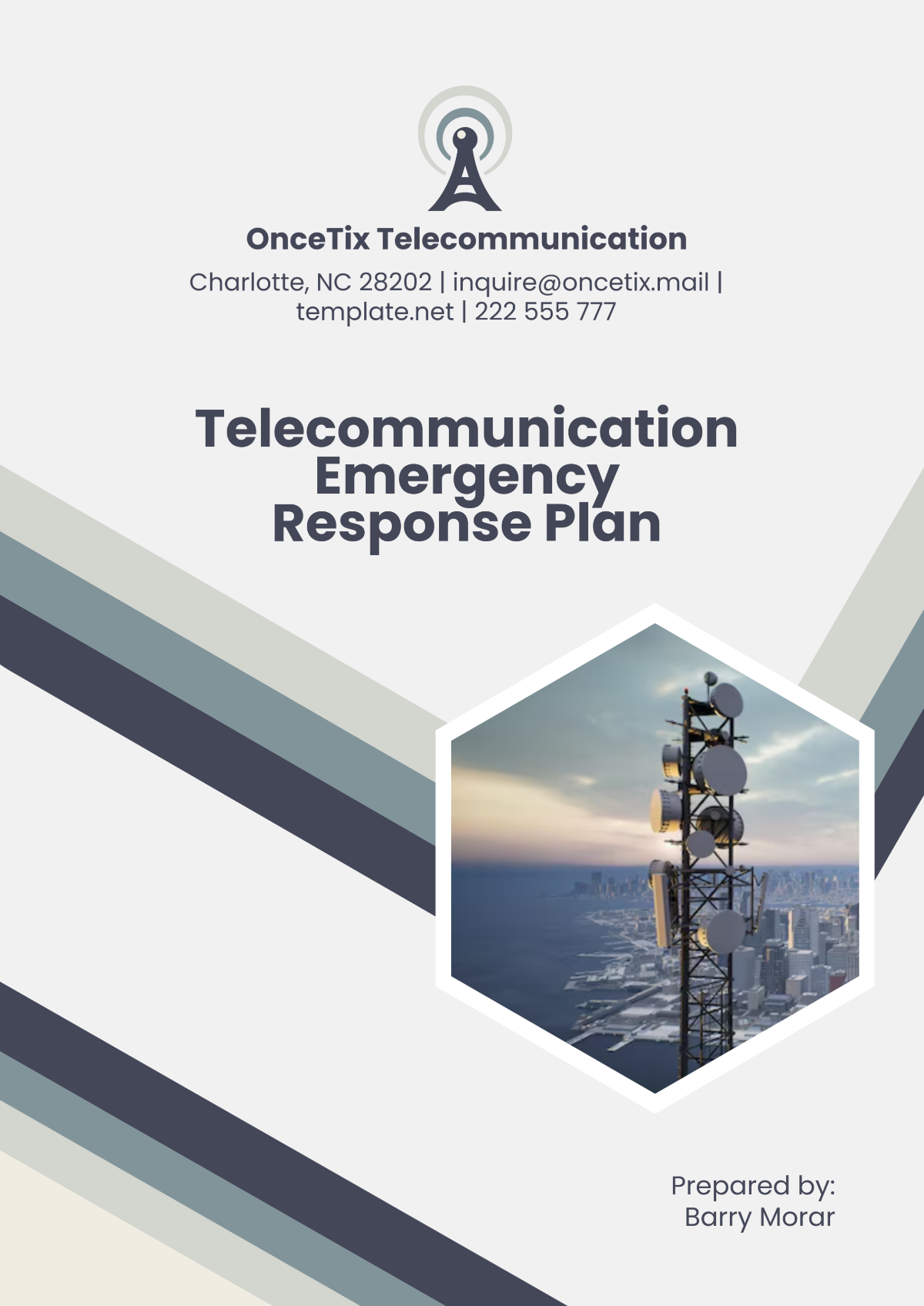Flood Emergency Response Plan
Introduction
This Flood Emergency Response Plan is designed to safeguard the well-being of people, minimize damage to property, and ensure a structured and efficient response to flood situations. The plan outlines roles, responsibilities, and actions required before, during, and after a flood incident.
Objectives
To prioritize the safety and health of individuals affected by floods.
To mitigate damage to buildings and infrastructure.
To establish a clear communication strategy for flood response activities.
To ensure timely and effective deployment of resources during flood events.
Scope
This plan applies to all staff, emergency personnel, and stakeholders involved in flood preparedness and response within the designated flood-prone areas.
Key Roles and Responsibilities
Role | Responsibilities |
|---|---|
Emergency Coordinator | Oversees the implementation of the Flood Emergency Response Plan, coordinates between different teams, and communicates with local authorities. |
Communications Officer | Maintains information flow, handles media inquiries, and ensures public awareness through updates. |
Logistics Team | Manages the provision of supplies, transportation, and emergency equipment during floods. |
Search and Rescue Team | Responsible for locating and evacuating individuals in distress, providing first aid, and transporting people to safe areas. |
Preparedness Activities
Conduct risk assessment and hazard mapping to identify flood-prone areas.
Establish flood warning systems and disseminate information to the public.
Organize training and drills for emergency personnel and the community.
Ensure availability of necessary resources and equipment for flood response.
Response Actions
Before a Flood
Activate flood warning systems and alert residents in vulnerable areas.
Set up emergency shelters and ensure their readiness to receive evacuees.
Pre-position resources such as sandbags, pumps, and emergency food supplies.
During a Flood
Monitor flood conditions and provide regular updates to the public.
Deploy the search and rescue team to affected areas as needed.
Coordinate the evacuation to safe locations if necessary.
After a Flood
Assess the damage to infrastructure and initiate repair and restoration activities.
Provide assistance to affected individuals in terms of food, water, and shelter.
Conduct a debrief to evaluate response effectiveness and identify improvement areas.
Communication Protocol
Effective communication is vital during a flood emergency. This includes clear dissemination of warnings, guidance to the public, and coordination with response teams. The Communications Officer will act as the central point for all media interactions and public announcements.
Resource Management
Managing resources effectively is crucial for a timely response. This involves inventorying available equipment, coordinating logistics for distribution, and identifying additional needs to handle the emergency efficiently.
Training and Drills
Regular training and drills ensure preparedness of personnel and the community at large. These exercises help identify potential gaps in the response plan and allow for continual improvement in procedures.
Conclusion
By following the strategies outlined in this Flood Emergency Response Plan, we aim to enhance our preparedness and response capabilities. Cooperation among all stakeholders and community involvement is essential to mitigate the impact of flood emergencies.
